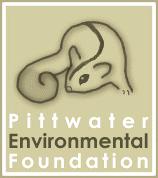Inbox And Environment News: Issue 332
October 8 - 14, 2017: Issue 332
Free National Parks Vehicle Entry On 8 October
4 October 2017: NSW OE&HVehicle entry costs will be waived for the state’s 45 fee paying national parks on Sunday 8 October as part of National Parks and Wildlife Service’s 50th anniversary celebrations, NSW Environment Minister Gabrielle Upton announced today.
The 50th anniversary celebrates five decades of conservation and is an opportunity to thank the staff and volunteers who protect and conserve more than 870 reserves, covering over 7 million hectares.
“National parks aren’t just incredibly beautiful, they are also home to many of our native plants and animals, including many threatened species,” Ms Upton said.
“You don’t have to be a professional bushwalker to enjoy the state’s national parks. People can swim, whale watch or picnic – there is something for everyone.”
To celebrate the 50th anniversary, seven public events will be held around the state on Sunday 8 October 2017, including a flagship event at Royal National Park, the oldest national park in the state.
The Royal National Park event at Ironbark Flats will include free Discovery Ranger tours and opportunities to learn about Aboriginal culture and Australian wildlife.
People can picnic or enjoy the free sausage-sizzle and the event’s music and dance performances. A free bus shuttle will run from Sutherland, Engadine and Loftus Train Stations and Bundeena to Ironbark Flats.
National Park events on Sunday 8 OctoberRoto House, Macquarie Nature Reserve, Port MacquarieCape Byron Lighthouse, Byron BayFitzroy Falls Visitor Centre, Morton National ParkYarrangobilly Caves, Kosciuszko National ParkHill End Historic Site, Hill EndThe Kinchega Woolshed and Shearers Quarters Complex, Kinchega National Park
Landing fees at The Basin, in Ku-ring-gai Chase National Park and Sydney Harbour National Park islands will also be waived. Why not pack a picnic, gather up your family and friends and enjoy a nature escape in a national park.
For more information and to register for the Royal National Park event, visit:
Serious About Civil Cops Serious Fine For Unlawful Waste Storage In West Gosford
Media release: 4 October 2017The NSW Environment Protection Authority (EPA) has fined demolition company Serious About Civil $15,000 for unlawfully using its West Gosford site as a waste facility.
Serious About Civil operates an excavation business in the Central Coast and was storing waste at its site on Nells Road, West Gosford. EPA officers inspected the site on June 5 this year and, despite not having the required licence, the business had stockpiles of uncovered timber waste, mixed soils and demolition waste on the site. Some of this timber waste was treated, which presents another level of chemical risk to the environment.
In a second inspection, the following week, EPA officers found that waste water (leachate) from the waste timber was draining out of the stockpiles and into stormwater drains.
The EPA took immediate action to address the waste on site, ordering Serious About Civil to stop receiving waste and issuing a clean-up notice that required all waste to be appropriately disposed.
EPA Acting Manager Regional Waste Compliance Steven James said while it was fortunate that the water pollution had not been more serious, the $15,000 fine should act as warning to all businesses to follow the rules when it comes to waste disposal.
“Waste materials need to be stored and disposed of appropriately to ensure the environment is not put at risk -that’s why it’s a legal requirement for any facility that stores waste on site must have relevant planning approval and, where required, an environment protection licence,” Mr James said.
“What’s disappointing about this incident is that, as a demolition business, Serious About Civil should know the rules of waste disposal inside out. Not only that, but there is a licensed waste facility directly across the road.”
Penalty notices are one of a number of tools the EPA can use to achieve environmental compliance including formal warnings, official cautions, licence conditions, notices and directions and prosecutions. For more information about the EPA’s regulatory tools, see the EPA Compliance Policy at www.epa.nsw.gov.au/legislation/prosguid.htm
Northern Beaches Locals And Australian Citizens Are Say NO To Adani - Australia Wide
Northern Beaches residents from Palm Beach to Manly headed to Bondi yesterday, October 7th, to be part of rallies taking place across Australia to reinforce their opposition to the Adani mines in Queensland. Local Stop Adani groups and major environmental organisations staged over 45 colourful, creative community events across the nation, with thousands of people using their bodies to create human signs which spell out ‘Stop Adani’.
Petitions are seemingly ignored, letters also wastebasketed, the film, Coal – Is it Worth It? filmed by Bayview resident John Davis with his wife Felicity before he died in a helicopter crash in 2015, while trying to expose damage caused by the Shenhua coal mine in the Liverpool Plains of NSW has been widely attended and underlines WE NEED TO GO IN THE OPPOSITE DIRECTION - NOW. What will it take for those voted in to represent us to do just that - represent us ?!
More recent 'ADANI' news runs below.
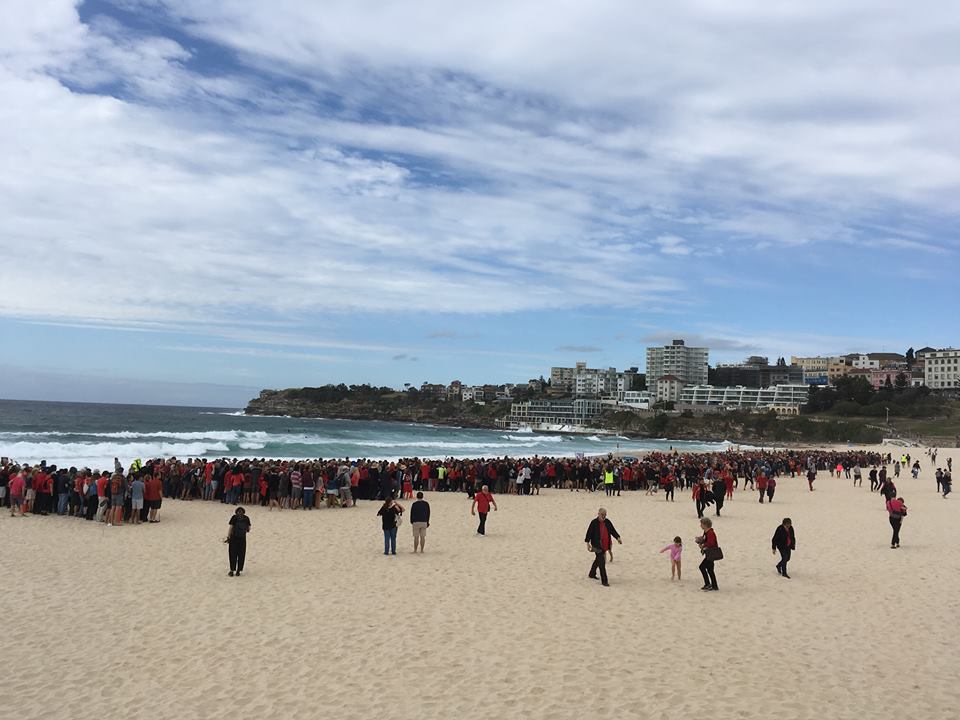
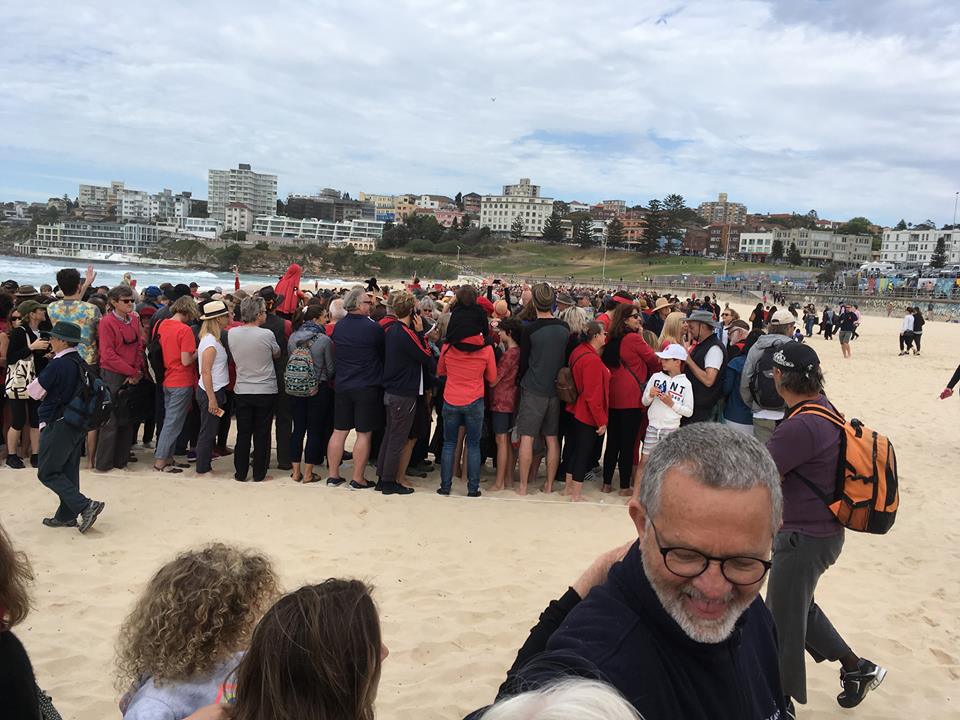
Saying NO to Adani on Bondi this morning! (October 7th 2017) - Photos courtesy Viktorija McDonell


Deployment Of Southern Sydney’s Artificial Reef Begins
October 3rd, 2017: NSW Government Department of Primary Industries
NSW’s largest offshore artificial reef in the waters off Port Hacking will provide new fishing opportunities for recreational fishers in Sydney.The first concrete modules have been delivered to the site of John Dunphy Offshore Artificial Reef in Sydney’s south. When deployed, the reef will be the size of two football fields.
The specially-designed reef is expected to create an intricate habitat for a variety of fish species. Popular species, such as yellowtail kingfish, snapper and mulloway, have been identified on the Sydney offshore artificial reef off The Gap at Vaucluse.
Minister for Primary Industries Niall Blair said the new reef would be a major attraction for the state’s one million recreational fishers.
“Everyone is hooked on our artificial reefs and today I am excited to announce another three which will be constructed off Wollongong, Newcastle and Jervis Bay,” Mr Blair said.
“We are committed to supporting our recreational fishers who generate over $3.4 billion each year for the NSW economy and create around 14,000 full time jobs.
“Our current reefs have over 50 species of fish and we expect this reef to attract even more,” Mr Blair said.
“Projects such as these help cement our commitment to providing plenty of exciting opportunities, not just for anglers in NSW, but for visitors to our State as well.”
Member for Cronulla, Mark Speakman welcomed the deployment of NSW’s largest artificial reef to the waters off the Shire.
“This is a great catch for the anglers of Cronulla and I look forward to seeing this new reef reel in tourists from across the State to enjoy the beautiful waters off Port Hacking,” Mr Speakman said.
NSW DPI will be deploying two offshore artificial reefs off the southern Sydney coast to increase fishing opportunities in the region. The reefs will be accessible from Port Botany and Port Hacking.
This is the fourth reef deployed by the NSW Government since 2011 and would be a significant one to the fishing community, formally named the John Dunphy Offshore Artificial Reef.
John was a pioneer in the fishing industry and wanted to make sure fishing was a pastime anyone could enjoy.
The reefs remain productive for decades, are non-polluting and can withstand a one -in- 100-year storm event.
It is proposed to construct each of the southern Sydney artificial reefs using up to 20 individual concrete modules measuring approximately 4-5 metres wide by 4-5 metres high and weighing up to 25 tonnes each with modules to be deployed in a patch-like arrangement, similar to the Shoalhaven Heads and Port Macquarie offshore artificial reef designs. The concrete modules will be designed to be self-weighted with no requirement for additional anchoring.
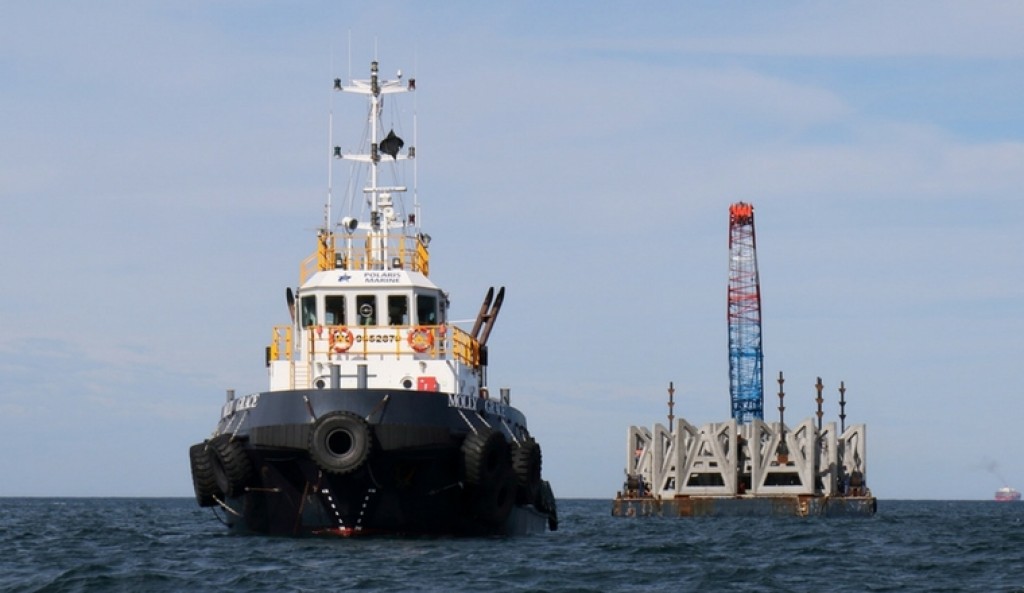
First concrete modules have been delivered to the site of John Dunphy Offshore Artificial Reef
Depending on finalisation of the preferred module design, each artificial reef will comprise of a total reef volume of around 1600 m3. The actual footprint area of the modules for each reef will be up to 320 m2 and likely to spread over areas of 100 by 100 metres.
DPI has completed an environmental assessment (EA) of the proposed artificial reefs which is assessing potential impacts on a small sub-local scale (within 30 m radius of the individual reef modules) to regional scales (>10 km from the reef). Coastal processes, benthic ecology and Aboriginal cultural heritage assessments are currently being undertaken by specialised consultants.
Comprehensive constraints mapping from South Coogee to the Royal National Park has been completed and seabed mapping has been undertaken throughout Bate Bay to south of Jibbon (Port Hacking) Point to identify suitable deployment areas. The identified deployment zone is a sandy area situated approximately 2.5 km south-south-east of Jibbon Point in 25-30 metres of water within 1 km offshore from the Royal National Park.
The NSW Government thanks the efforts of the Recreational Fishing Alliance of NSW, Australian National Sportsfishing Association and the South Sydney Amateur Fishing Association for securing the funding for the Port Hacking reef through the Transport for NSW Port Botany Boating and Fishing Infrastructure Fund.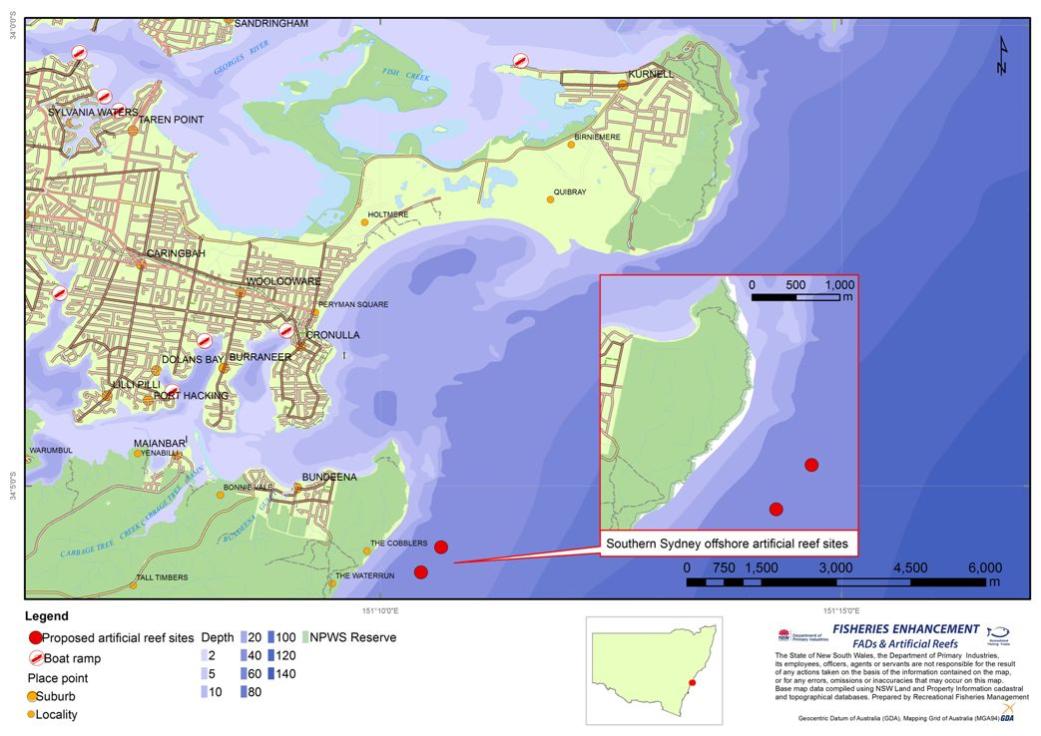


Melbourne And Sydney Should Prepare For 50 Degree Days – Study
October 4th, 2017: Australian National University
A new study led by ANU has warned that Melbourne and Sydney should prepare for 50 degree Celsius days under the Paris Agreement global warming limit of 2 degrees.
Lead researcher Dr Sophie Lewis said the study assessed the potential magnitude of future extreme temperatures in Australia under Paris targets of an increase in global temperatures of 1.5 and 2 degrees Celsius above pre-industrial levels.
"Major Australian cities, such as Sydney and Melbourne, may experience unprecedented temperatures of 50 degrees Celsius under 2 degrees of global warming," said Dr Lewis from the Fenner School of Environment and Society and the Centre of Excellence for Climate System Science at ANU.
"The increase in Australian summer temperatures indicates that other major cities should also be prepared for unprecedented future extreme heat.
"Our climate modelling has projected daily temperatures of up to 3.8 degrees Celsius above existing records in Victoria and New South Wales, despite the ambitious Paris efforts to curb warming."
Dr Lewis said immediate climate action internationally could prevent record extreme seasons year after year.
"Urgent action on climate change is critical - the severity of possible future temperature extremes simulated by climate models in this study poses serious challenges for our preparedness for future climate change in Australia," she said.
Dr Lewis said the record hot Australian summer in 2012 and 2013 was made more likely due to human-caused greenhouse warming, and such an event was expected to occur more frequently under future warming.
"One of the hottest years on record globally in 2015 could be an average year by 2025," she said.
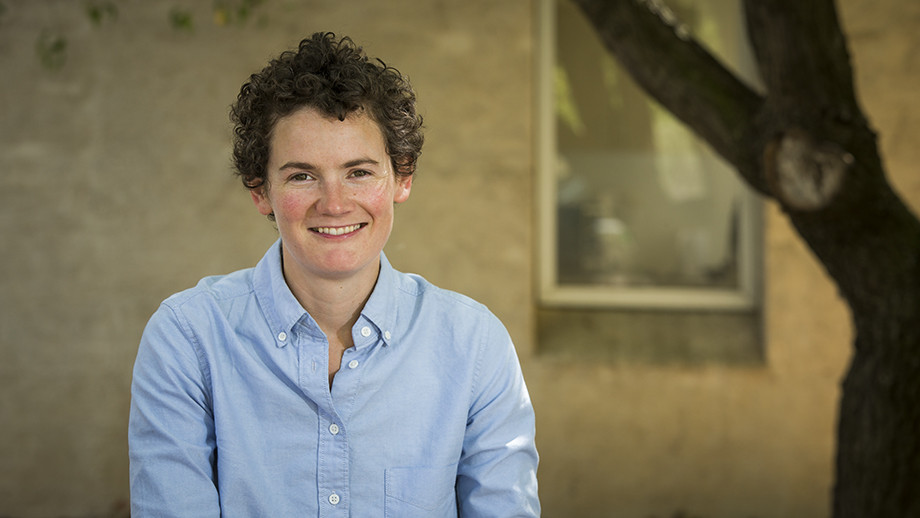
Dr Sophie Lewis from the ANU Fenner School of Environment and Society. Image Stuart Hay ANU
Co-researcher Dr Andrew King from the University of Melbourne said the research team used a combination of observations and modelling to assess how the magnitude of record-breaking events may change in the future.
"Previous scientific studies have focused on how current temperature extremes have been impacted by climate change, or on how the frequency of these current extremes will change in the future," said Dr King from the School of Earth Sciences and the Centre of Excellence for Climate System Science at the University of Melbourne.
"This study takes a different approach and examines how the severity of future temperature extremes might change in the future."
The research, supported by the Centre of Excellence for Climate System Science, is published in Geophysical Research Letters.
Lewis S. C., King A. D. & Mitchell D. M. (2017). Australia's unprecedented future temperature extremes under Paris limits to warming.Geophysical Research Letters, 44. https://doi.org/10.1002/2017GL074612

Australian Government Must Stop Adani's Dirty Coal Mine
October 3rd, 2017: Australian Conservation Foundation
Australian Conservation Foundation (ACF) President and senior businessman, Geoff Cousins, responds to Four Corners revelations about Adani.Cousins travelled to India in March to meet communities affected by Adani’s operations.ACF releases a comprehensive dossier of all preferential treatment by Australian, Queensland and local governments to Adani.In response to the ABC’s 4 Corners story “Digging into Adani” ACF President, Geoff Cousins, said:
“While Australians will be shocked by last night’s 4 Corners on Adani they shouldn’t be surprised. Adani is already facing a fine for breaching a Queensland pollution licence and it is now demanding a massive handout to help build a dirty new coal project.
“What is surprising is that Malcolm Turnbull and Annastacia Palaszczuk are so determined to give Adani extraordinary preferential treatment for a project that will threaten our Great Barrier Reef and fuel climate change.
“On my trip to India earlier this year I met first-hand the communities affected by the pollution from Adani’s operations. It is astounding that our elected representatives are considering giving Adani a billion-dollar loan through the Northern Australia Infrastructure Facility giving the company’s appalling track record and the damage its dirty coal plans will do to Australia.
“The footprint of Adani’s dirty coal mine will damage everything it touches: it will pollute where they dig it up, it will pollute when they burn the coal and it’ll make the world a more dangerous place by fuelling global warming.
“The people of India are paying a price for Adani’s greed, but the price Australian’s will pay will be the loss of the Great Barrier Reef because of runaway climate change. Our government must stop the loan and not allow this project to go ahead.”
Download a full copy of A Fistful of Dollars: Adani’s Preferential Treatment by Federal, State and Local Australian Governments.
Since Adani first announced its intention to build Australia’s largest and most polluting coal mine, the company has received a staggering number of special deals and preferential treatment from all levels of government. Unprecedented measures have been taken to ensure that the project proceeds, including direct financial support in the form of loans and infrastructure, and relaxing environmental and regulatory approval conditions.
These decisions are deeply unpopular; a recent ReachTEL poll revealed that only 7% of Australians support public funding for the project.Not only will Adani’s mega-mine trash the Great Barrier Reef and hasten climate change, this report demonstrates that it is being encouraged to do so by all tiers of Australian government and both major political parties.
This media brief outlines the deep and ongoing government assistance being provided. As future political decisions about the project are made, they should be considered alongside the massive existing concessions that have already been gifted to Adani by all tiers of Australian government.
In summary, these include:- Cutting a special deal with the Queensland Government for a massive reduction in royalty payments. Details of the royalty deal have been kept secret, but it is estimated that the subsidy will be worth between $370-725 million.
- Rushing through retrospective amendments to the Native Title Act 1993 (Cth) after the Federal Court put Adani’s mine in doubt with the McGlade decision. In a submission to the Senate Inquiry into the amendments, Seed Indigenous Youth Climate Network commented that, “we have serious concerns about the way this Bill was rushed into Federal Parliament and is being pushed to a vote, without adequate consultation”.
- Granting Adani a water licence that allows the company to take an unlimited volume of groundwater for up to 60 years. As sugar cane farmer Robert Quirk notes, farmers are suffering through droughts yet, “at the same time, we're saying to a major international company that it can have as much as it likes. Sounds like two sets of rules to me”.
- Strongly considering Adani for a $1 billion low-interest loan from the Northern Australia Infrastructure Facility (NAIF). Adani is currently in the final approval phase of seeking funding. NAIF remains the subject of a Senate Inquiry into its operations and governance, and serious concerns have been raised about its transparency, rejection of FOI requests, assessment processes and conflicts of interest.
- Publicly funded lobbying trips by Australian politicians to visit Adani in India and court their business. Premier Palaszczuk joined themayors of six regional Queensland councils in India to meet with Adani Group chairman, Gautam Adani.
- Declaring the Adani coal mine and rail project as “Critical Infrastructure”. This centralised powers in the hands of the Queensland Coordinator-General, allowing him to accelerate and guide the approvals process for the project by excluding most normal processes for appeal and review, setting time-frames for decisions to be made and, in some circumstances, assessing and granting final approvals.
- Promises by Queensland regional councils to construct key infrastructure such as airports to service Adani’s FIFO workers. A bidding war has developed between Rockhampton, Mackay and Townsville regional council over the best place to locate Adani’s regional FIFO hub.
- Issuing Adani’s Abbot Point Coal Terminal a Temporary Emissions Licence during Tropical Cyclone Debbie. Adani later breached this by releasing storm-water containing more than eight times the permitted concentration of coal. Newly released Queensland Government testing found significant coal levels at the Abbot Point discharge point to the Caley Valley Wetlands.
- Implementing weak approval conditions under the Environment Protection and Biodiversity Conservation Act 1999 (Cth). Despite touting the conditions as “some of the strictest environmental conditions in Australian history”, the EPBC Act approval conditions fail to protect biodiversity and the Great Barrier Reef, and continue a trend of reduced transparency and accountability for mining projects.
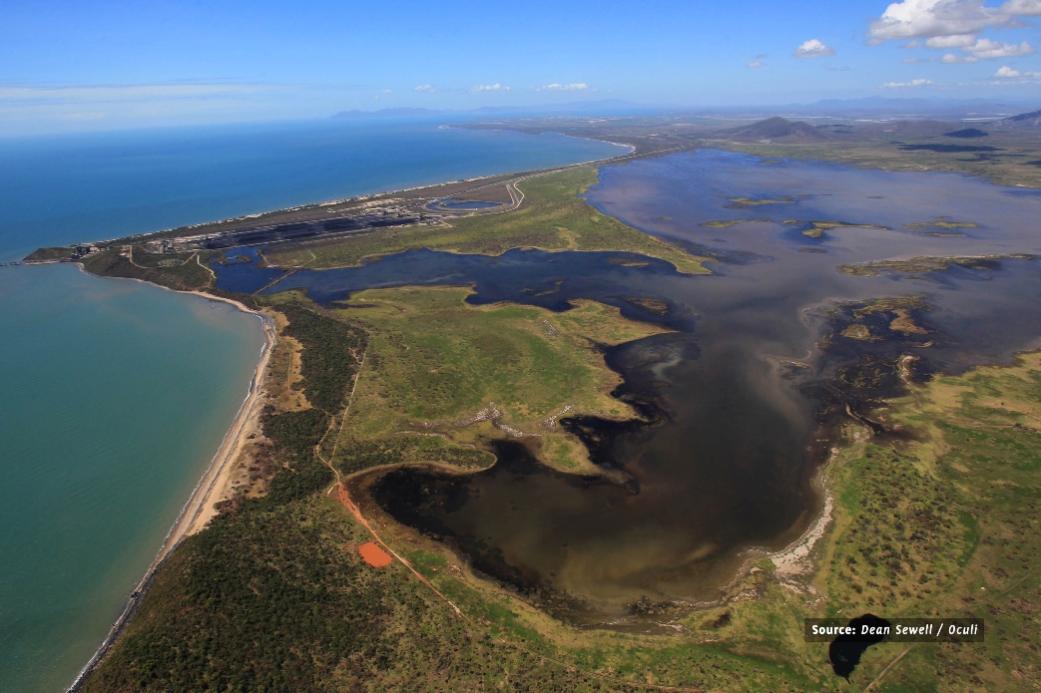
Coal water run-off moving north-west into the wetlands and coal dust on the beaches from the Abbot Point coal loading facility. Photo: Dean Sewell
- Cutting a special deal with the Queensland Government for a massive reduction in royalty payments. Details of the royalty deal have been kept secret, but it is estimated that the subsidy will be worth between $370-725 million.
- Rushing through retrospective amendments to the Native Title Act 1993 (Cth) after the Federal Court put Adani’s mine in doubt with the McGlade decision. In a submission to the Senate Inquiry into the amendments, Seed Indigenous Youth Climate Network commented that, “we have serious concerns about the way this Bill was rushed into Federal Parliament and is being pushed to a vote, without adequate consultation”.
- Granting Adani a water licence that allows the company to take an unlimited volume of groundwater for up to 60 years. As sugar cane farmer Robert Quirk notes, farmers are suffering through droughts yet, “at the same time, we're saying to a major international company that it can have as much as it likes. Sounds like two sets of rules to me”.
- Strongly considering Adani for a $1 billion low-interest loan from the Northern Australia Infrastructure Facility (NAIF). Adani is currently in the final approval phase of seeking funding. NAIF remains the subject of a Senate Inquiry into its operations and governance, and serious concerns have been raised about its transparency, rejection of FOI requests, assessment processes and conflicts of interest.
- Publicly funded lobbying trips by Australian politicians to visit Adani in India and court their business. Premier Palaszczuk joined themayors of six regional Queensland councils in India to meet with Adani Group chairman, Gautam Adani.
- Declaring the Adani coal mine and rail project as “Critical Infrastructure”. This centralised powers in the hands of the Queensland Coordinator-General, allowing him to accelerate and guide the approvals process for the project by excluding most normal processes for appeal and review, setting time-frames for decisions to be made and, in some circumstances, assessing and granting final approvals.
- Promises by Queensland regional councils to construct key infrastructure such as airports to service Adani’s FIFO workers. A bidding war has developed between Rockhampton, Mackay and Townsville regional council over the best place to locate Adani’s regional FIFO hub.
- Issuing Adani’s Abbot Point Coal Terminal a Temporary Emissions Licence during Tropical Cyclone Debbie. Adani later breached this by releasing storm-water containing more than eight times the permitted concentration of coal. Newly released Queensland Government testing found significant coal levels at the Abbot Point discharge point to the Caley Valley Wetlands.
- Implementing weak approval conditions under the Environment Protection and Biodiversity Conservation Act 1999 (Cth). Despite touting the conditions as “some of the strictest environmental conditions in Australian history”, the EPBC Act approval conditions fail to protect biodiversity and the Great Barrier Reef, and continue a trend of reduced transparency and accountability for mining projects.

COAL FOUND IN CALEY WETLANDS. ADANI CAN’T BE TRUSTED WITH OUR REEF
September 20, 2017: Australian Conservation Foundation
Confirmation that nationally significant wetlands were polluted with coal from Adani’s Abbot Point terminal is further evidence the company cannot be trusted to protect our Great Barrier Reef, clean water and wildlife, leading Australian conservation groups have warned.
Newly released Queensland Government testing found significant coal levels at the Abbot Point discharge point to the Caley Valley Wetlands following Cyclone Debbie. Separate independent testing commissioned by the Australian Conservation Foundation (ACF) and Australian Marine Conservation Society (AMCS) of water samples taken at the same time confirmed coal pollution at higher levels.
ACF Chief Executive Officer, Kelly O’Shanassy, said it was now known that Adani had not only released polluted coal water into the Caley Valley Wetlands, but it also massively breached a generous ocean pollution license during the same event.
“It appears Adani can’t safely operate a coal port on a cyclone-prone coast. But the risk to the Great Barrier Reef and protected wetlands will be that much higher if Adani’s massive Carmichael coal mine is constructed, which will double the amount of coal at Abbot Point,” Ms O’Shanassy said.
“The massive Adani coal mine will help fuel dangerous global warming, which we know is making cyclones more intense. It would be the height of recklessness for it to go ahead.”
AMCS Fight For Our Reef Campaign Director, Imogen Zethoven, said the Queensland Government’s requirement for Adani to undertake an environmental assessment of the wetlands was not sufficient.
“The full damage of this event will likely never be known because of Adani’s poor environmental monitoring and the Queensland Government’s limited sampling regime,” Ms Zethoven said.
“The government must now require Adani’s evaluation to be peer reviewed by a qualified person nominated by the environment department. The government must also undertake its own independent investigation of the impact of Adani’s coal port on the Caley Valley Wetlands and the surrounding marine environment, home to turtles, dugongs and inshore dolphins.
“I have seen with my own eyes earlier this year the environmental devastation caused by Adani’s massive coal plant in Gujarat, India – cleared mangroves, polluted water and the destruction of a natural coastline.
“Now Adani has released coal polluted water into a nationally significant wetland and next to the Great Barrier Reef. This company cannot be trusted with our precious natural assets.
_____________________________
Visit Issue 309: The Caley Wetlands - Going, Going...GONE
Caley Valley Wetland Assessment Report Received
20 September 2017: Media Release - QLD Department of Environment and Heritage Protection, Queensland GovernmentThe Department of Environment Heritage Protection (EHP) has received a report on the condition of the Caley Valley Wetlands following stormwater releases from Abbot Point Coal Terminal during Tropical Cyclone (TC) Debbie in March this year.
Abbot Point Bulk Coal Pty Ltd was granted a temporary emissions licence (TEL) during Tropical Cyclone Debbie that permitted an elevated suspended solid limit (100 milligrams per litre) on stormwater releases from the terminal during the high rainfall associated with the event.
The recorded concentration of Total Suspended Solids (TSS) at the release point into the wetland did not exceed the limit of 100 milligrams per litre during the period of the TEL.
However following the release of satellite imagery that appeared to show contamination of the wetlands, EHP commissioned this report.
The report by the Department of Science, Information Technology and Innovation (DSITI) found no evidence of widespread contamination of the wetland.
The appearance of water bodies in remotely sensed imagery can be affected by several factors, including the depth and clarity of the water, the angle of the sun and the sensor when the image is captured.
The report found a coal concentration of 10% in sediment sampled at the immediate discharge point, reducing quickly to minor concentrations of around 2% further away from the discharge point and falling to trace levels below 1% throughout the broader wetland area.
There was very little visual evidence of fine coal particles across the wetland as a whole and it appears that where fine coal particles have been observed, there have been no widespread impacts on the wetland.
The report recommends additional monitoring be undertaken and EHP has responded quickly to this recommendation.
On 18 September 2017, in response to the key findings and recommendations of the Caley Valley Wetland assessment, EHP issued Abbot Point Bulk Coal Pty Ltd with a notice to prepare an environmental evaluation.
The environmental evaluation will require a report to be prepared which includes additional monitoring and identification of any adverse impacts on the Caley Valley Wetland from activities conducted at Abbot Point Coal Terminal.
Following the submission and review of the required report, EHP will consider whether further action is required in line with the department’s Enforcement Guidelines.
The Caley Valley Wetland assessment report is available at: Caley Valley Wetland report (PDF, 8.2MB).
Birds Snapped During Spring School Holidays 2017: Flights Of Colour
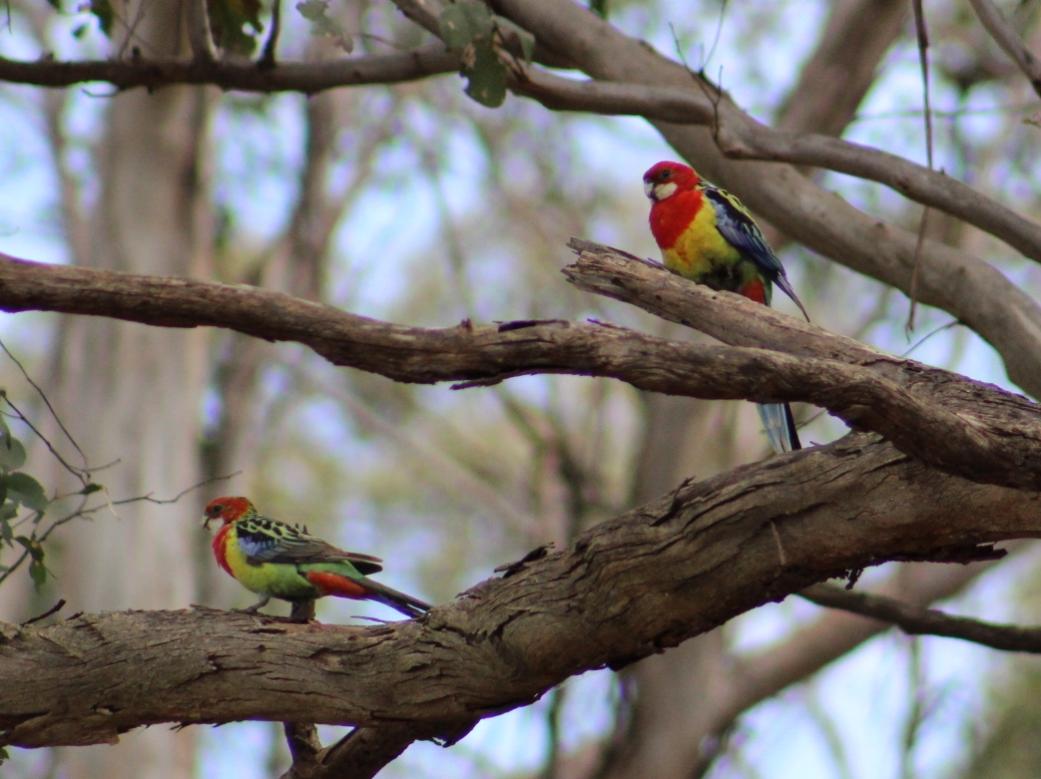
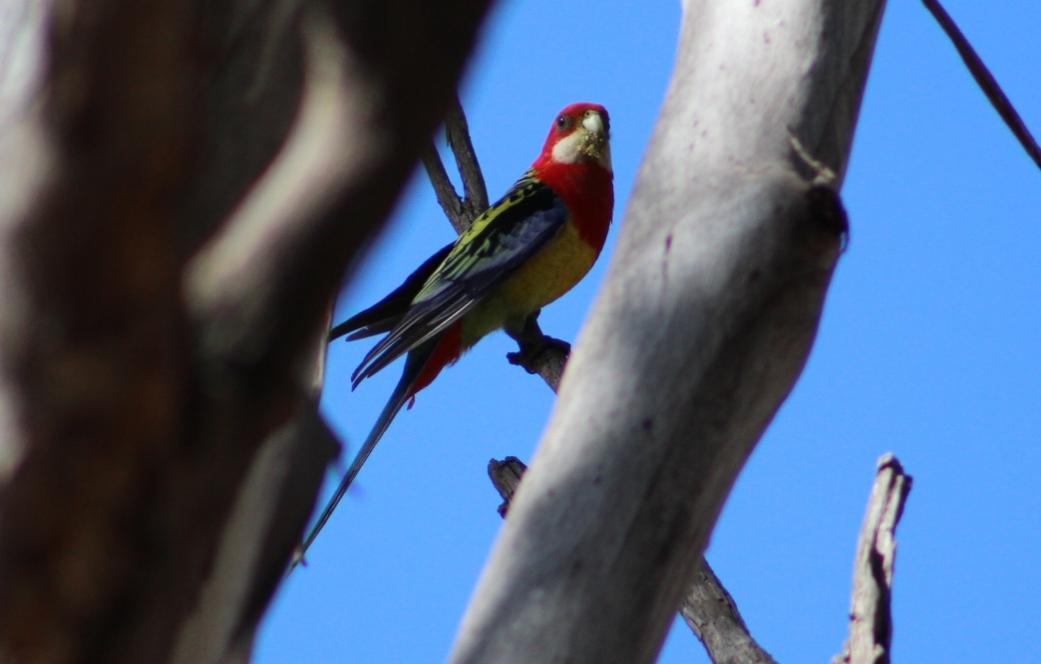
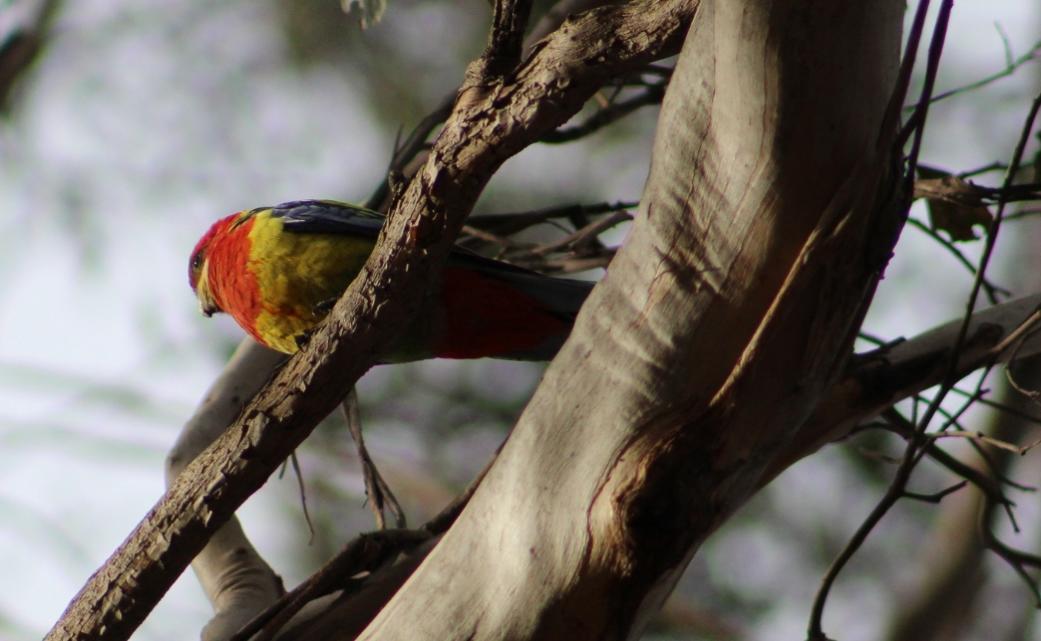
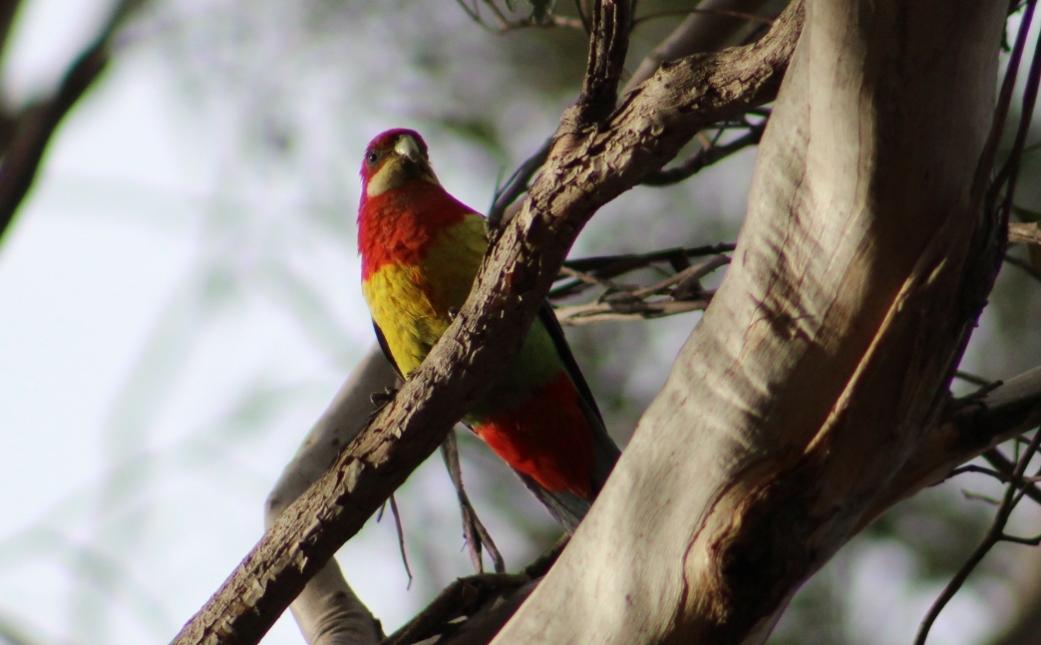
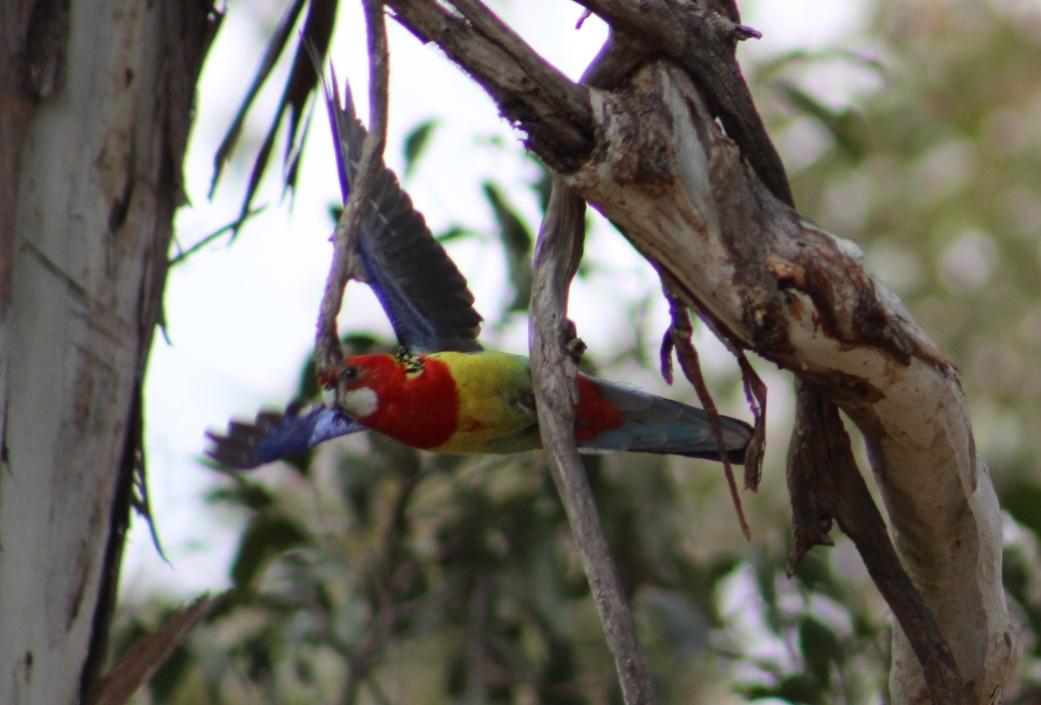
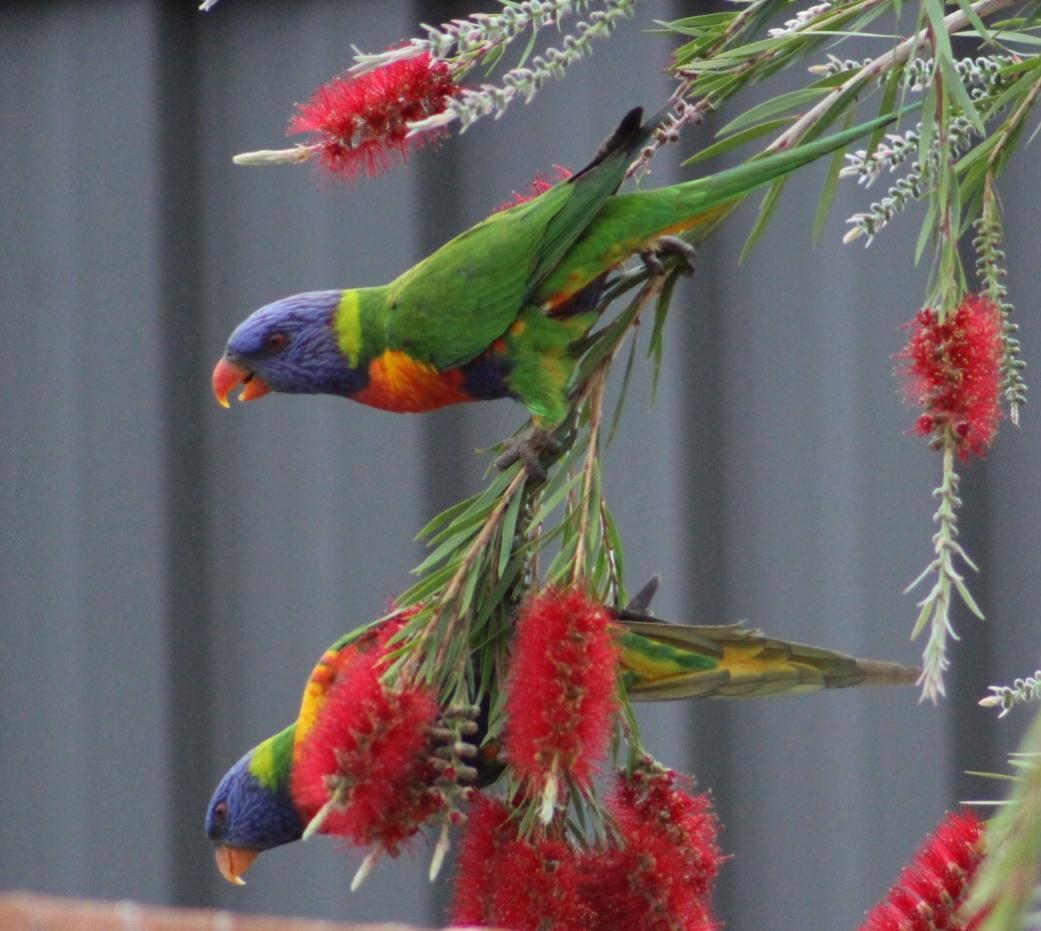
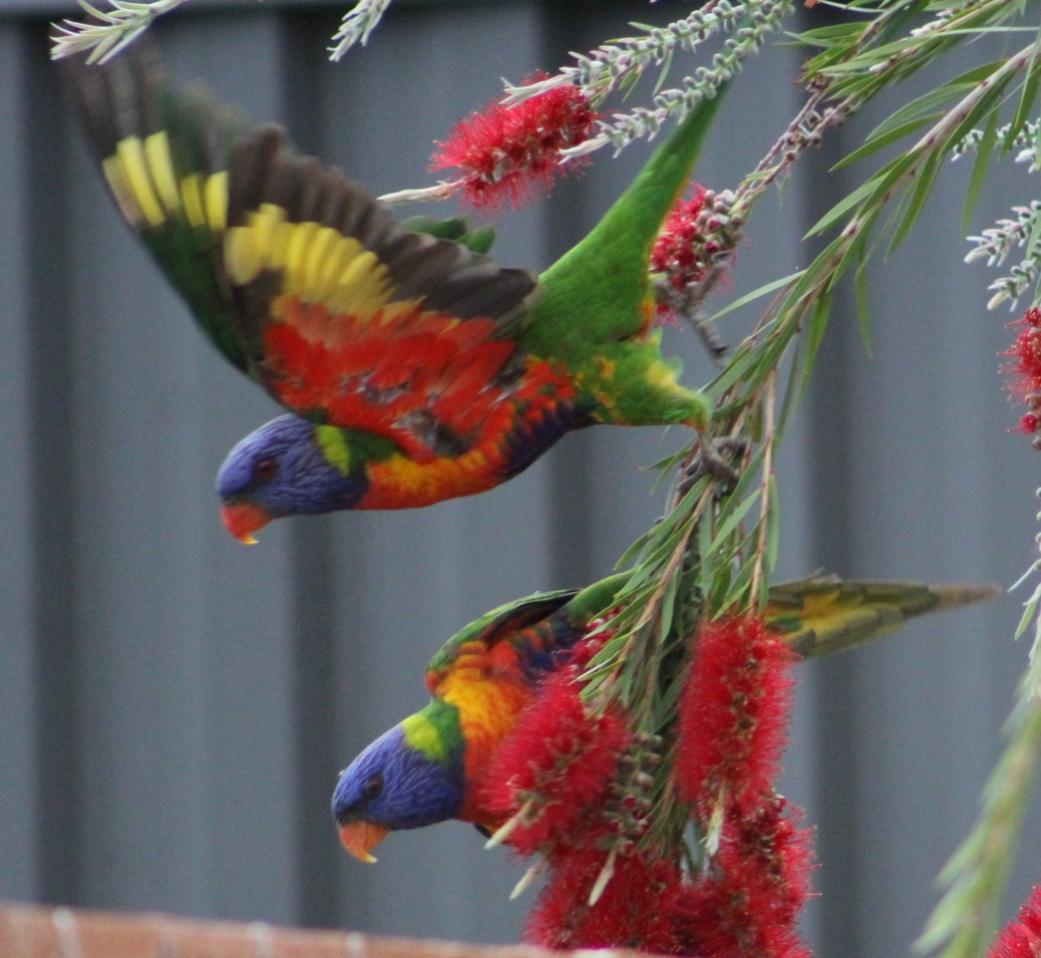 Lots of red bottlebrush out at present - birds are feasting! Rainbow lorikeet (Trichoglossus moluccanus)
Lots of red bottlebrush out at present - birds are feasting! Rainbow lorikeet (Trichoglossus moluccanus)







New Research: Cats Kill More Than One Million Australian Birds Per Day
Tuesday, 03 October, 2017: MEDIA RELEASE- Threatened Species Recovery HubFeral cats kill 316 million birds and pet cats kill 61 million birds in Australia every year. This equates to cats killing more than 1 million Australian birds every day. More than 99% of these casualties are native birds.
These are some of the findings of recently published research by a group of Australian environmental scientists.
The estimates are based on results from nearly 100 studies across the country, each sampling cat density, and another set of nearly 100 studies across the country that assessed cat diet.
Lead researcher Professor John Woinarski said that while previous research has looked at the impact cats are having on Australia’s mammals, this is the first nation-wide assessment of the impact of cats on Australia’s birds.
“Everyone knows that cats kill birds, but this study shows that, at a national level, the amount of predation is staggering, and is likely to be driving the ongoing decline of many species,” explains Professor Woinarski, from Charles Darwin University.
The study also found that the highest rates of cat predation on birds is on Australia’s islands and in remote arid Australia, where the number of birds killed by cats each year can reach 330 birds per square kilometre.
In a second study the research team also looked at which bird species are at most risk from cat predation. They found records of cats killing 338 native bird species – almost half of Australia’s native bird species. This included 71 threatened bird species.
“We found that the birds most likely to be killed by cats are medium sized birds, birds that nest and feed on the ground, and birds that occur on islands or in woodlands, grasslands and shrublands.”
“For Australian birds, cats are a long-standing, broad-scale and deeply entrenched problem that needs to be tackled more effectively” Professor Woinarski said.
Australia’s Acting Threatened Species Commissioner, Sebastian Lang, said “This evidence is extremely important, and of great concern.
“Our knowledge of the impacts of cats on threatened mammals was a major stimulus for our first-ever national Threatened Species Strategy, which prioritised actions to control feral cats,” Mr Lang said.
“This new research emphasises the need to continue working to reduce the impact of cats on our native biodiversity.
“The number of birds killed by pet cats is also high, but I would like to commend pet owners who are containing their cats instead of letting them roam freely,” Mr Lang said.
The research was undertaken by the Threatened Species Recovery Hub of the National Environmental Science Programme. The Hub is a collaboration of 10 leading Australian universities and the Australian Wildlife Conservancy, to undertake research to support the recovery of Australia’s threatened species.
The work has been published in the science journal Biological Conservation.
Innovative Idea To Make Bin Storage More Appealing
Spotted at Moby Dick's Restaurant - Whale Beach SLSC
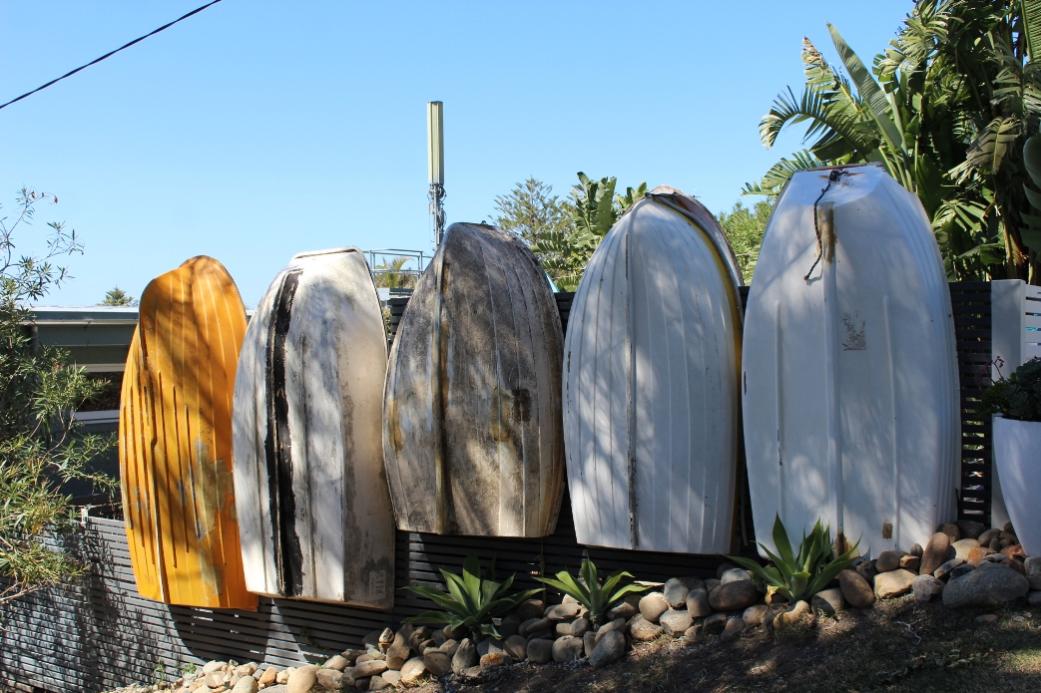
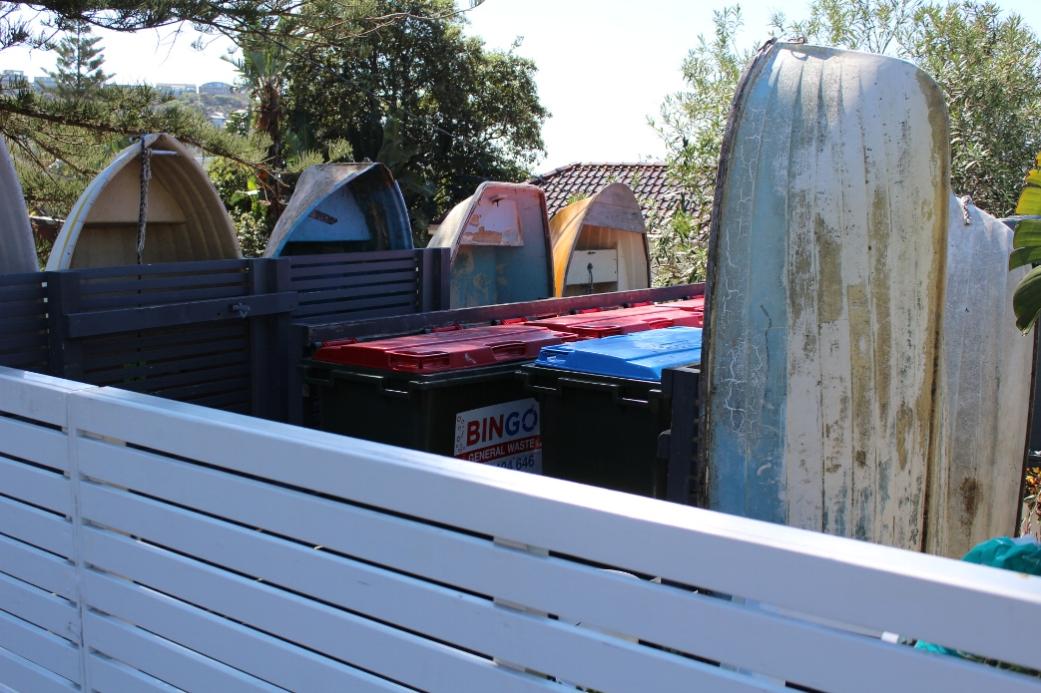
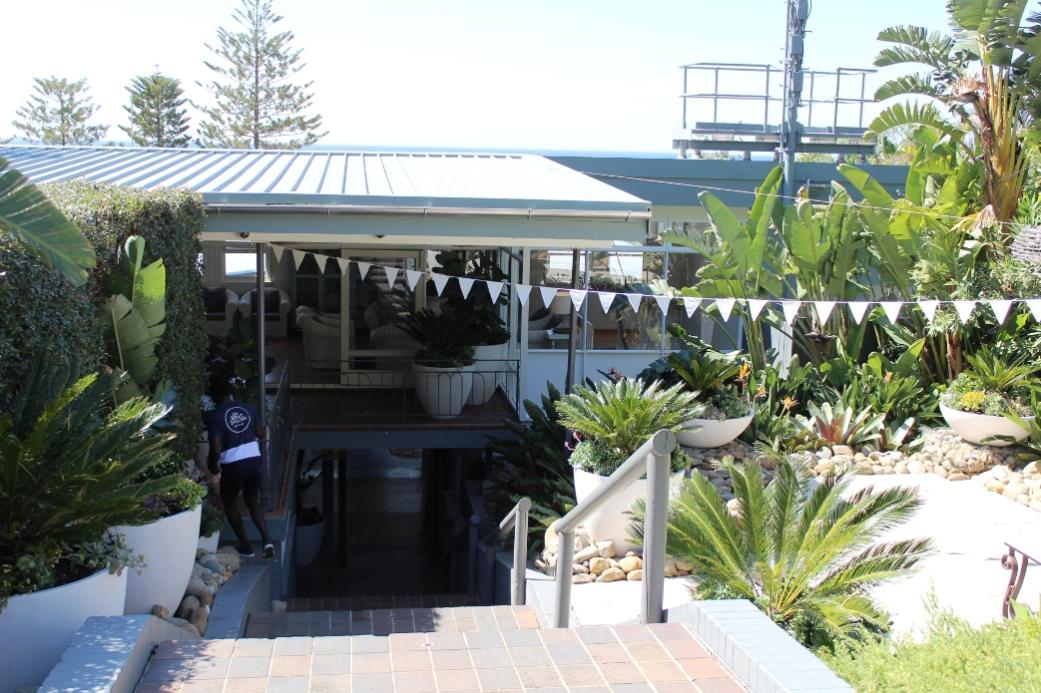



Farmers To Continue To Farm Smarter Under Landcare
Deputy Prime Minister and Minister for Agriculture and Water Resources, Barnaby JoyceAssistant Minister to the Deputy Prime Minister, Luke Hartsuyker28 September 2017: Media release
- $134 million over six years for the Smart Farms program
- Part of Coalition Government’s $1 billion investment in the next phase of the National Landcare Program
- Smart Farms is focused on protecting Australia’s natural resources of soils, water, vegetation and biodiversity by facilitating the development and adoption of more sustainable agricultural practices
Farmers, fishers and community groups will soon be ‘farming smarter’ thanks to $134 million for a landmark new program under the next phase of the Coalition Government’s $1 billion National Landcare Program.
Deputy Prime Minister and Minister for Agriculture and Water Resources, Barnaby Joyce, said the Smart Farms initiative will support further development and adoption of sustainable farming practices. Grants to eligible organisations and individuals will assist farmers, fishers and aquaculture operators to protect natural resources, deliver benefits for the community and contribute to increased productivity, and farm-gate returns.
“The Coalition Government is backing Australia’s farmers who manage 61 per cent, or well over half, of Australia’s landmass, to meet our national and global demand for food and fibre,” Minister Joyce said.
“Our farmers have an international reputation as sustainable land managers and Smart Farms will assist farmers, fishers, community and industry groups to further develop and share better land management practices and therefore strengthen their resilience, competitiveness and productivity.
“This program includes small projects that can make a real difference to a local community and deliver excellent value for money.
“For example, Cotton Australia and the Cotton Research Development Corporation received just over $422,000 for an Innovation Grant from the current National Landcare Program for the project ‘Sustainable Australian Cotton Production Supplying International Markets, in Narrabri, NSW’.
“The project has improved the industry’s web-based, best management practice platform—myBMP— which is an important tool that incorporates and demonstrates to the community the industry’s improved farming practices and careful management of our natural resources.
“The project has also been pivotal in the development and integration of sustainability indicators to enable the Australian cotton industry to expand into internationally sustainable cotton markets.
Assistant Minister to the Deputy Prime Minister, Luke Hartsuyker, said farming and regional communities will continue to benefit from the Government’s investment.
“There are three elements to the Smart Farms Program and each will focus on improving soil, vegetation and biodiversity condition and support agricultural systems to adapt to change,” Minister Hartsuyker said.
The three elements to the Smart Farms Program are: - Smart Farming Partnerships ($60 million over six years): Large multi-year grants for projects, with organisations working in partnership to develop, trial and implement new and innovative practices and tools that support uptake of sustainable agriculture practices across our agricultural, fishing, aquaculture and farm forestry industries.
- Smart Farms Small Grants ($50 million over six years): Small grants program (grants between $5,000 and $100,000) to develop and extend new tools and technologies that help farmers, fishers, foresters and regional communities adopt best practice land management.
- Building Landcare Community and Capacity ($24 million over six years): will support the sharing of knowledge and achievements and community leadership in adopting sustainable agricultural practices.
“The program supports the sharing of knowledge and achievements, whilst promoting community leadership which will help farmers boost their productivity and better manage natural resources,” Minister Hartsuyker said.
Further details on the Smart Farms Program will be available on www.nrm.gov.au and on the National Landcare Program Facebook page over the next few weeks.
- $134 million over six years for the Smart Farms program
- Part of Coalition Government’s $1 billion investment in the next phase of the National Landcare Program
- Smart Farms is focused on protecting Australia’s natural resources of soils, water, vegetation and biodiversity by facilitating the development and adoption of more sustainable agricultural practices
- Smart Farming Partnerships ($60 million over six years): Large multi-year grants for projects, with organisations working in partnership to develop, trial and implement new and innovative practices and tools that support uptake of sustainable agriculture practices across our agricultural, fishing, aquaculture and farm forestry industries.
- Smart Farms Small Grants ($50 million over six years): Small grants program (grants between $5,000 and $100,000) to develop and extend new tools and technologies that help farmers, fishers, foresters and regional communities adopt best practice land management.
- Building Landcare Community and Capacity ($24 million over six years): will support the sharing of knowledge and achievements and community leadership in adopting sustainable agricultural practices.
Australia's New Icebreaker Name Providing Students With The Trip Of A Lifetime
29 September 2017: Media release - The Hon. Josh Frydenberg MP, Minister for the Environment and Energy
Twelve school students are set to become the first children to fly to and set foot on Antarctica as part of the Australian Antarctic Program, following their win in the Turnbull Government's national "Name our Icebreaker" competition.
The winning students from St Virgil's College in Hobart, Tasmania, and Secret Harbour Primary School near Perth in West Australia named the new $1.9 billion ship RSV Nuyina (noy-yee-nah), meaning 'Southern Lights' in palawa kani, the language of Tasmanian Aborigines.
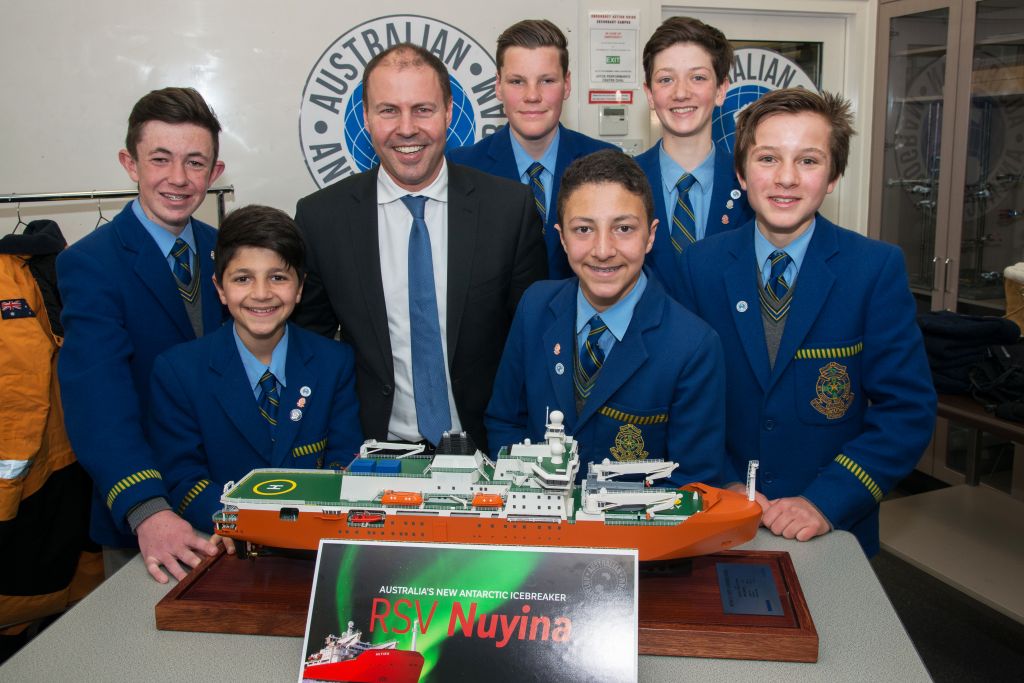
Secondary school winners of the Name Our Icebreaker competition from St Virgil's College, Hobart, with Department of the Environment and Energy Minister, the Hon Josh Frydenberg MP. (Photo: Glenn Jacobson)
They will embark on their exciting, landmark journey to the icy continent in November. In many ways, these lucky young Australians are reflective of the long-term investment this new vessel represents for our Antarctic capabilities.

Twelve school students are set to become the first children to fly to Wilkins Aerodrome in Antarctica. (Photo: Australian Antarctic Division)
All schools participating in the naming competition can be proud of their thought-provoking contributions.
The national naming competition attracted nearly 800 entries from primary and secondary students across every state and territory, with about a fifth of these suggesting Indigenous names. Many of the suggested names were inspired by the Southern Lights or aurora australis, the atmospheric phenomenon that produces curtains of colourful weaving lights originating over Antarctica.
Using the name nuyina for the Hobart-based ship recognises the long spiritual connection Tasmanian Aboriginal people have with the frozen continent, as the most southerly humans on the planet during the last ice age.
The name also connects Australia's more recent icy endeavours, with several Australian Antarctic ships named after the evocative lights. Sir Douglas Mawson's ship, used for the first Australian-led expedition to the Antarctic, was the SY Aurora and our currently-serving icebreaker is the RSV Aurora Australis.
Formal approval to use the palawa kani word nuyina on the new ship has been received from the Tasmanian Aboriginal Centre (TAC).
Four runner-up prizes of a $500 technology voucher were awarded to Rokeby Primary School in Tasmania, Ulladulla High School in New South Wales, Essex Heights Primary School in Victoria and Cowell Area School in South Australia.
The keel of RSV Nuyina was laid last month and the icebreaker will arrive in Hobart in 2020.
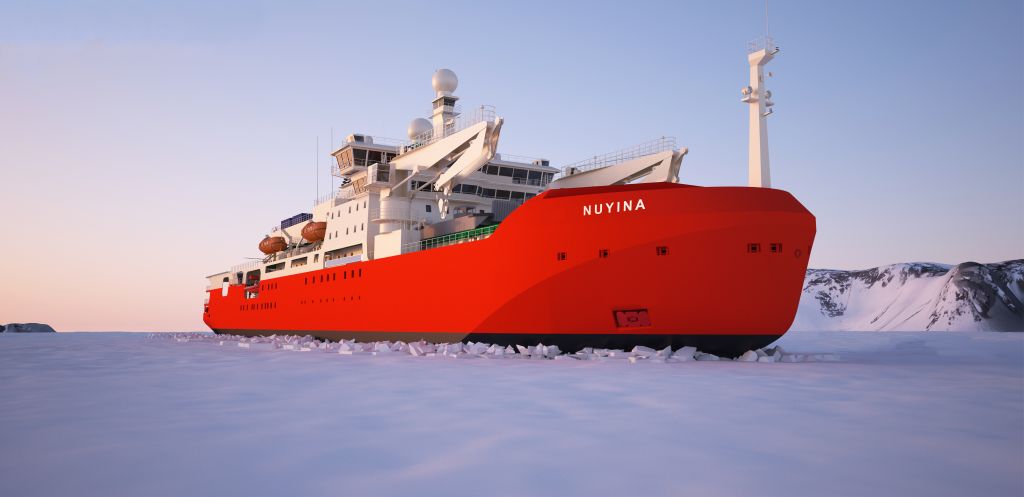
Australia's new icebreaker will be called RSV Nuyina. (Photo: Damen/DMS Maritime/Knud E. Hansen)



It’s Magpie Swooping Season
by BirdLife AustraliaIt’s that time of year again. As the days gradually begin to grow longer and the weather warms up, many birds begin to build their nests and lay their eggs. Their number includes Australian Magpies.
Because magpies are one of the most common birds in built-up areas, as well as in rural environments, they often come into contact with us. For most of the year, people are happy to interact with magpies, but with the arrival of the breeding season, the situation’s not always so happy.
Magpie breeding season is dreaded by many people because of the perception that at this time of year the birds relentlessly swoop at people, both on foot or riding bicycles, as well as dogs and anything else that moves.
Though wide-held, this perception is not altogether accurate.
Although it’s true that spring is magpie swooping season, it should be noted that not all magpies swoop at people. In fact, it is generally quite a small proportion of them that are aggressive towards humans. Most of the birds that attack are males, though, indeed, most male magpies don’t attack, and those that do usually only become aggressive when people venture too close to the nest tree.
Although the timing of swooping behaviour varies between the different regions of Australia, most swooping activity occurs in mid- to late spring, during the brief period when there are magpie chicks in the nest, with the intensity of attacks increasing gradually as the nestlings grow. Few magpies attack before their eggs have hatched, and the attacks usually drop off after the chicks have fledged (left the nest). It’s a brief window, but one that can be traumatic for people being swooped.
There are a few things you can do to prevent being swooped, but nothing is guaranteed to work.- The most sensible method is to avoid walking or riding near trees where magpies are nesting.
- If you can’t avoid the area, try wearing a hat or carrying an umbrella for protection; cyclists can attach a forest of cable-ties to their helmets.
- Attach eye spots to the back of your hat.
- Wave a stick above your head as you walk past.
- Keep an eye on the bird; he’s much less likely to attack if he knows he’s been sussed.
- Above all, don’t harass the birds. Though tempting, it will only make them more aggressive. And remember, harming magpies is against the law.
For more information, see Magpie Alert, by Darryl Jones (UNSW Press, Sydney).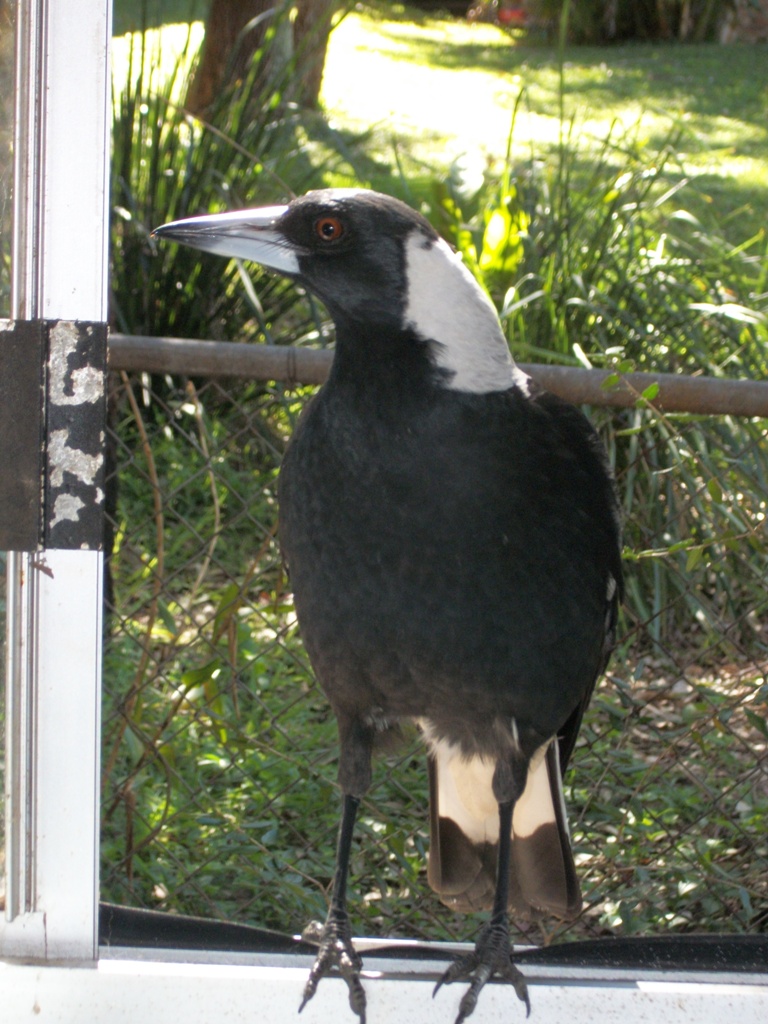
- The most sensible method is to avoid walking or riding near trees where magpies are nesting.
- If you can’t avoid the area, try wearing a hat or carrying an umbrella for protection; cyclists can attach a forest of cable-ties to their helmets.
- Attach eye spots to the back of your hat.
- Wave a stick above your head as you walk past.
- Keep an eye on the bird; he’s much less likely to attack if he knows he’s been sussed.
- Above all, don’t harass the birds. Though tempting, it will only make them more aggressive. And remember, harming magpies is against the law.

Avalon Boomerang Bags: An Idea That's Spreading To Stop Plastic Bag Use
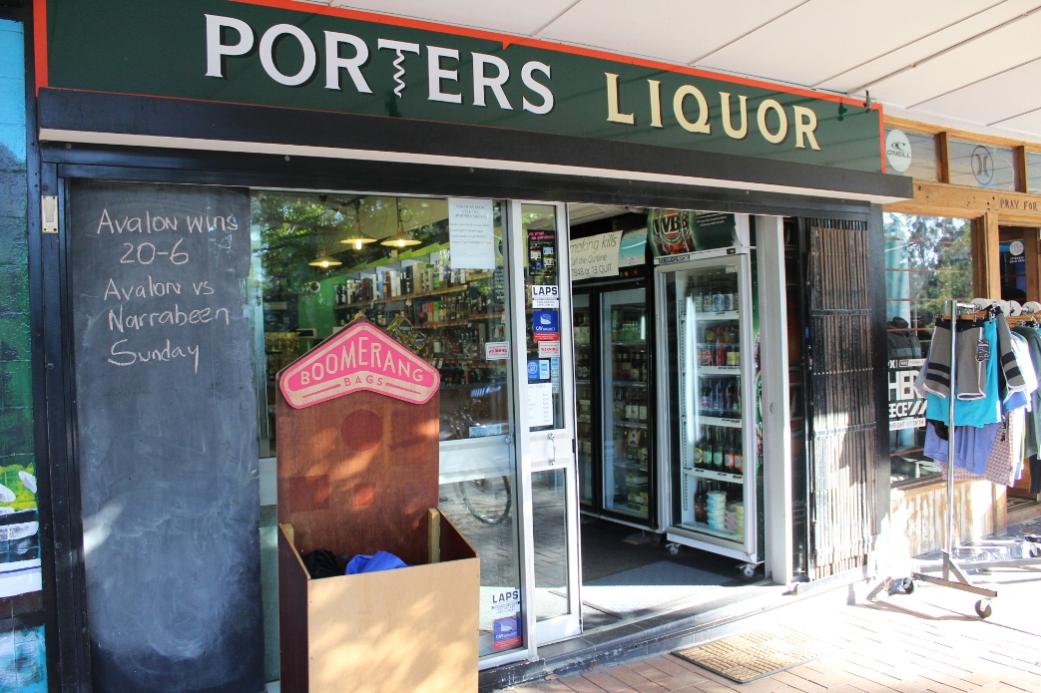 Avalon Boomerang Bags - now at North Avalon shops - A J Guesdon photo, 25.5.2017
Avalon Boomerang Bags - now at North Avalon shops - A J Guesdon photo, 25.5.2017

Avalon Boomerang Bags
Tuesdays
11am-5pm @ sewcraft cook Unit 20/14 Polo Ave Mona Vale
Boomerang Bags is a bag-share initiative involving the installation of a number of ‘Boomerang Bag’ boxes throughout any given business district, shopping centre, street or market. Each box is stocked with re-useable bags for customers to borrow if they have forgotten to bring their own.
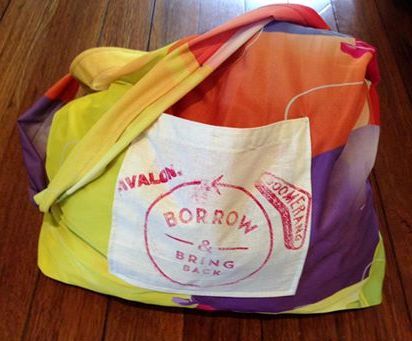
Unlike the traditional purchase-and-keep approach, Boomerang Bags are free, and local community members are responsible for returning the bags once they’re no longer required. The availability of free re-useable bags reduces the reliance of local businesses to supply bags to all customers, and encourages a mentality of re-use among local communities, thereby reducing the amount of plastic bag material entering our landfills and waterways.
So who makes the Boomerang Bags? Well, you do! Boomerang Bags are made by local communities for local communities, and are sewn from recycled and donated materials.
Get in touch if you'd like to donate materials, join us making bags, or implement Boomerang Bags in your own local area!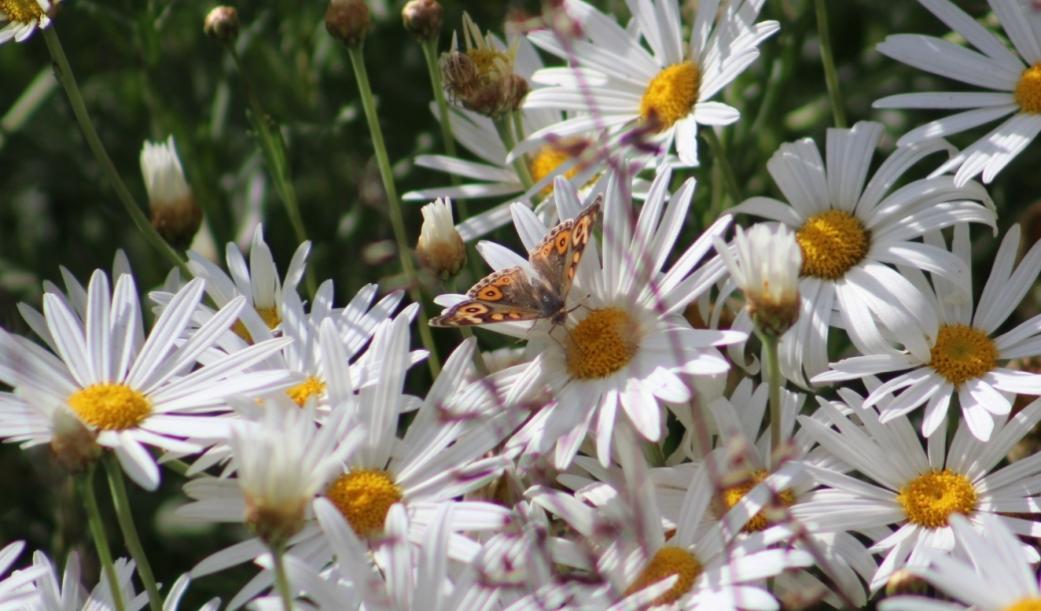


Narrabeen Lagoon Clean Up - 2101 Community Page Initiative
When: Sunday, October 15 at 8 AM - 11 AMPlease meet @ 8am - Woolworths Carpark; and 8.30am Bilarong reserve.
We're asking the community to come together on Sunday 15 October 2017 to help clean up the foreshore and waterways of Narrabeen Lagoon.
Bring kayaks, standup boards, hats, sunblock and a great attitude.
Looking forward to seeing friends and family there to help keep 2101 beautiful!!
Join the Page and keep up to date on what's happening on the 15th! 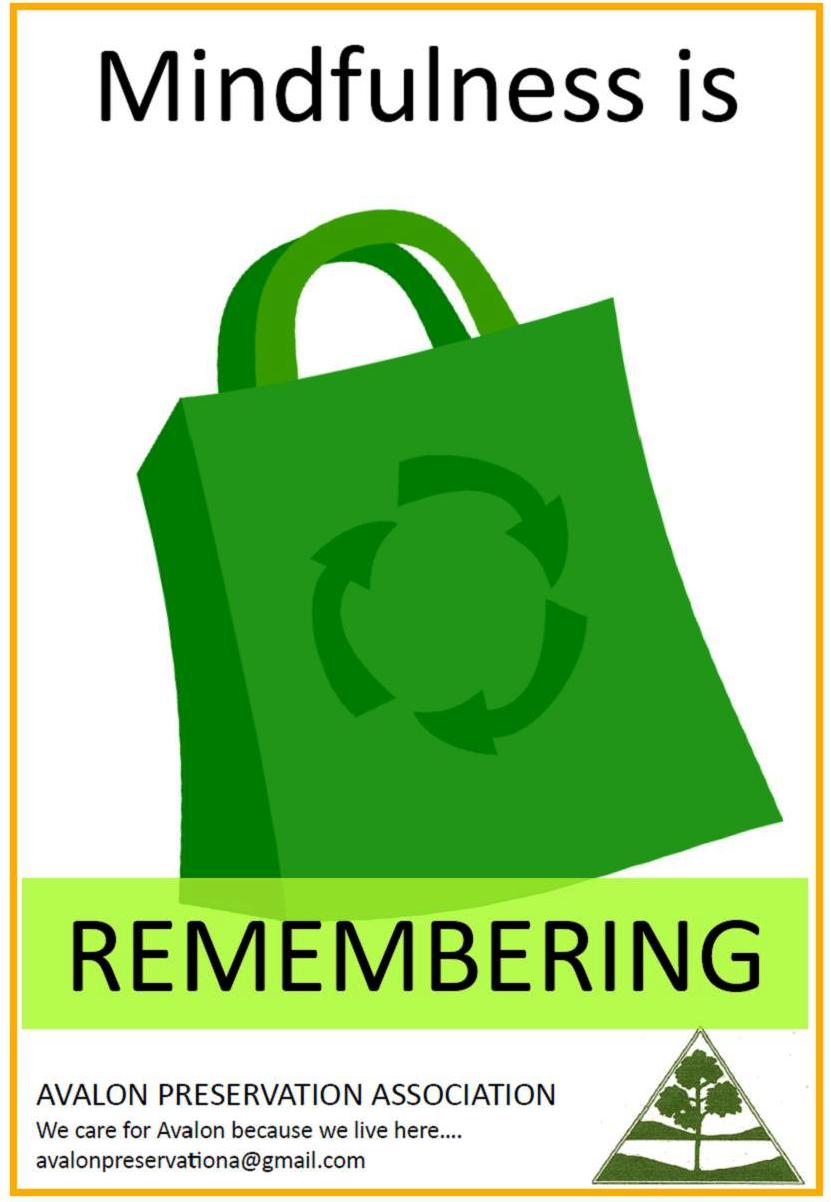
Bushcare in Pittwater
For further information or to confirm the meeting details for below groups, please contact Council's Bushcare Officer on 9970 1367
BUSHCARE SCHEDULES
Where we work Which day What time
Avalon
Angophora Reserve 3rd Sunday 8:30 - 11:30am
Avalon Dunes 1st Sunday 8:30 - 11:30am
Avalon Golf Course 2nd Wednesday 3 - 5:30pm
Careel Creek 4th Saturday 8:30 - 11:30am
Toongari Reserve 3rd Saturday 9 - 12noon (8 - 11am in summer)
Bangalley Headland 2nd Sunday 9 to 12noon
Bayview
Winnererremy Bay 4th Sunday 9 to 12noon
Bilgola
North Bilgola Beach 3rd Monday 9 - 12noon
Algona Reserve 1st Saturday 9 - 12noon
Plateau Park 1st Friday 8:30 - 11:30am
Church Point
Browns Bay Reserve 1st Tuesday 9 - 12noon
McCarrs Creek Reserve Contact Bushcare Officer To be confirmed
Clareville
Old Wharf Reserve 3rd Saturday 8 - 11am
Elanora
Kundibah Reserve 4th Sunday 8:30 - 11:30am
Mona Vale
Mona Vale Beach Basin 1st Saturday 8 - 11am
Mona Vale Dunes 2nd Saturday+3rd Thursday 8:30 - 11:30am
Newport
Bungan Beach 4th Sunday 9 - 12noon
Crescent Reserve 3rd Sunday 9 - 12noon
North Newport Beach 4th Saturday 8:30 - 11:30am
Porter Reserve 2nd Saturday 8 - 11am
North Narrabeen
Irrawong Reserve 3rd Saturday 2 - 5pm
Palm Beach
North Palm Beach Dunes 3rd Saturday 9 - 12noon
Scotland Island
Catherine Park 2nd Sunday 10 - 12:30pm
Elizabeth Park 1st Saturday 9 - 12noon
Pathilda Reserve 3rd Saturday 9 - 12noon
Warriewood
Warriewood Wetlands 1st Sunday 8:30 - 11:30am
Whale Beach
Norma Park 1st Friday 9 - 12noon
Western Foreshores
Coopers Point, Elvina Bay 2nd Sunday 10 - 1pm
Rocky Point, Elvina Bay 1st Monday 9 - 12noon

Bushcare in Pittwater
Where we work Which day What time
Avalon
Angophora Reserve 3rd Sunday 8:30 - 11:30am
Avalon Dunes 1st Sunday 8:30 - 11:30am
Avalon Golf Course 2nd Wednesday 3 - 5:30pm
Careel Creek 4th Saturday 8:30 - 11:30am
Toongari Reserve 3rd Saturday 9 - 12noon (8 - 11am in summer)
Bangalley Headland 2nd Sunday 9 to 12noon
Bayview
Winnererremy Bay 4th Sunday 9 to 12noon
Bilgola
North Bilgola Beach 3rd Monday 9 - 12noon
Algona Reserve 1st Saturday 9 - 12noon
Plateau Park 1st Friday 8:30 - 11:30am
Church Point
Browns Bay Reserve 1st Tuesday 9 - 12noon
McCarrs Creek Reserve Contact Bushcare Officer To be confirmed
Clareville
Old Wharf Reserve 3rd Saturday 8 - 11am
Elanora
Kundibah Reserve 4th Sunday 8:30 - 11:30am
Mona Vale
Mona Vale Beach Basin 1st Saturday 8 - 11am
Mona Vale Dunes 2nd Saturday+3rd Thursday 8:30 - 11:30am
Newport
Bungan Beach 4th Sunday 9 - 12noon
Crescent Reserve 3rd Sunday 9 - 12noon
North Newport Beach 4th Saturday 8:30 - 11:30am
Porter Reserve 2nd Saturday 8 - 11am
North Narrabeen
Irrawong Reserve 3rd Saturday 2 - 5pm
Palm Beach
North Palm Beach Dunes 3rd Saturday 9 - 12noon
Scotland Island
Catherine Park 2nd Sunday 10 - 12:30pm
Elizabeth Park 1st Saturday 9 - 12noon
Pathilda Reserve 3rd Saturday 9 - 12noon
Warriewood
Warriewood Wetlands 1st Sunday 8:30 - 11:30am
Whale Beach
Norma Park 1st Friday 9 - 12noon
Western Foreshores
Coopers Point, Elvina Bay 2nd Sunday 10 - 1pm
Rocky Point, Elvina Bay 1st Monday 9 - 12noon
Friends Of Narrabeen Lagoon Catchment Activities
 Narrabeen Lagoon Catchment Traverse
Narrabeen Lagoon Catchment Traverse
10am - Sunday Oct 8 repeated Sunday Dec 3This walk is a hidden gem and offers the most amazing variety of vegetation. Also lovely scenic views and sometimes rare fauna. Plant ID as we go and a brief lunch break BYO. Start 10am finish 2:30pm. LImited numbers.Carpool back. Bookings essential. Phone or text Conny on 0432 643 295.
Oxford Falls triangleSunday 22/10 7.30- 11am This walk will only take about 2 hrs walking, but a few small pampas grass clumps need removal and we will have morning tea in the creek bed or on a high rock ledge.Please bring gloves and morning tea.Bookings: Conny Harris 0432643295 or Email Conny
Terrey Hills to Morgan Rd Saturday 4/11 7.30-11.30 am Start at Terrey Hills cross the Deep Creek catchment valley and walk along feeder creek and end at Morgan Rd. Please bring gloves, old screwdriver and am tea. Plan is to include 30 min weeding. Carpool required.Bookings: Conny Harris 0432 643 295 or Email Conny
Spotlight Walk - 8:15pm Monday Nov 27This walk will take place after Jayden Walsh has shown pictures and talked about amphibians and reptiles in Narrabeen Lagoon Catchment.8:15pm Meet at Katoa Close. Spaces limited to 30 people
Spotlight Walk - 8pm Friday Dec 15Spotlighting walk - meet at start of Slippery Dip Trail. Spaces limited to 20 people
Wildlife Walk - 7:30am Friday January 19, 2018Meet at end of Deep Creek Carpark. Spaces limited to 30 peopleEmail: Friends of Narrabeen Lagoon Catchment to get a ticket and book a place for one of these fascinating Wildlife Walks led by Jayden Walsh.
Bush Regeneration - Narrabeen Lagoon Catchment This is a wonderful way to become connected to nature and contribute to the health of the environment. Over the weeks and months you can see positive changes as you give native species a better chance to thrive. Wildlife appreciate the improvement in their habitat.
Belrose area - Thursday mornings Belrose area - Weekend mornings by arrangementContact: Phone or text Conny Harris on 0432 643 295
Wheeler Creek - Wednesday mornings 9-11amContact: Phone or text Judith Bennett on 0402 974 105Or email: Friends of Narrabeen Lagoon Catchment : email@narrabeenlagoon.org.au
Eco Paddle on Narrabeen Lagoon1pm, Sunday Feb 11, 2018Black Swan have returned to the lagoon after 20 years - come and see these majestic creatures! This paddle will visit the Western Basin, Deep and Middle Creeks. Beautiful Deep Creek attracts migratory birds from as far away as Russia and Middle Creek has been the subject of a substantial remediation programme. A relaxing 2 to 3 hour afternoon paddle. No previous kayaking experience required, tuition given. BYO boat or a hire kayak can be arranged for you at cost. Bookings essential.Email tonycarr@ozemail.com.au or call 0417 502 056.

Plan To Protect NSW From Pest Plants And Animals
13 September,2017: NSW DPI
Local communities, groups and individuals are invited to have their say in developing the NSW Invasive Species Plan 2017-2021 to reduce the impacts of pest animals and weeds on our land, sea and waterways.
NSW Department of Primary Industries (DPI) invasive species strategy manager, Quentin Hart, said invasive animals and weeds impact on the environment, agriculture, infrastructure and human health.
“We aim to develop a new plan with input from the community, which will help prevent new pest incursions and reduce existing pest threats,” Mr Hart said.
“Invasive pest animals, including wild dogs, deer and rabbits, feral cats and goats, foxes and carp, are estimated to cost the Australian economy more than $1 billion annually and the NSW economy at least $170 million annually.
“More than 1650 introduced plant species have established in NSW and at least 300 of these weeds have a significant impact on the environment and agriculture – the cost of weeds to NSW agriculture alone has been estimated to be near $1.8 billion per year.
“Marine and freshwater environments too are under threat, with more than 250 introduced marine species detected in our coastal waters.
“Aquatic pests can cause serious negative impacts on marine environments and animals, and they can outcompete native species, all posing significant risks to the profitability of Australia’s $2.4 billion-a-year fisheries and aquaculture industries.”
Mr Hart said the plan will need to account for the potential of invasive species to establish and spread with future changes to the climate.“The new plan will help guide investment and resources to invasive species prevention and management programs, with the aim of building NSW’s ability and commitment to manage invasive speciesactivities on the ground,” he said.
Supporting the NSW Biosecurity Framework and complementing the NSW Biosecurity Strategy, Australian Pest Animal Strategy, Australian Weeds Strategy and National System for the Prevention and Management of Marine Pest Incursions, the draft plan is now open for comment.
All stakeholders, government agencies, industry, landholders and members of the community, who play a valuable role managing invasive species, are invited to have their say on the draft plan by Friday 13 October 2017, Visit:
Help Shape Crawney Pass National Park's Future
20 September 2017: NPWSThe National Parks and Wildlife Service (NPWS) is asking for community feedback on the draft Plan of Management (POM) for Crawney Pass National Park.
NPWS Ranger Catherine Watt said that input from the local community is critical to help shape the future of the Park located on the Liverpool Range.
"We encourage the community to get involved and contribute ideas. This will help us achieve the right balance between conservation, culture and nature-based activities such as bushwalking and bird watching," Ms Watt said.
The Park is home to several threatened plants and animals including a population of the rare Booroolong frog (Litoria booroolongensis) and it also helps protect the headwaters of the Isis and Peel rivers.
The reserve is important to the identity and spirituality of the local Aboriginal people of the Nungaroo and Wanaruah Nations.
"By contributing to the management plan local people can also play an important part in protecting our precious threatened species and the cultural aspects of this ancient landscape," Ms Watt said.
The draft plan for Crawney Pass National Park is now on public display andsubmissions are open until 20 November.
Hard copies of the draft plan can be viewed at:NPWS Office, 20 Hayes Street, SconeTamworth Regional Council, Nundle Office, 58 Jenkins Street, TamworthScone Library, 130 Liverpool Street, SconeNundle Library, Innes Street, NundleOffice of Environment and Heritage (OEH) Customer Centre, Level 14, 59-61 Goulburn Street, Sydney.
Those interested in contributing comments online can visit OEH's 'Have your say' website
Bird Walks And Talks 2017: PNHA
Come and see and hear some of our fantastic native birds, many of which you'll never see in your garden. Join in a Sunday guided bird walk with Pittwater Natural Heritage Association. All walks start at 8am and end about 10am.
November 26 Warriewood Wetlands. Meet end of Katoa Close, north Narrabeen.
Bring binoculars if possible. Drink, hat and comfortable shoes.More information contact pnhabirdwatching@gmail.com or Ph Kerry on 0402 605 721.
You don't need to book but if we know you're coming we'll watch out for you. Call if in doubt about weather as we won't go out if it's raining.


Update On Baleen 2D HR Seismic Survey
(The survey comprises 46 2D lines of total length 208km.) - NOPSEMA 'Not reasonably satisfied – opportunity to modify EP'Decision date: 03/08/2017 Titleholder action Resubmission due date 3: 02/09/2017Extension of timeframe: 17/08/2017 Titleholder action: 15/10/2017
And NOPSEMA page Baleen 2D HR Seismic Survey: Asset Energy Pty Ltd - also: Decision notification (PDF 137 KB)
From Decision notification:Basis of decision NOPSEMA has assessed the environment plan in accordance with its assessment policies and procedures.
On completion of assessment, NOPSEMA has decided that it is not reasonably satisfied that the environment plan meets the criteria below as set out in regulation 10A of the Environment Regulations: (a) is appropriate for the nature and scale of the activity (b) demonstrates that the environmental impacts and risks of the activity will be reduced to as low as reasonably practicable (c) demonstrates that the environmental impacts and risks of the activity will be of an acceptable level (d) provides for appropriate environmental performance outcomes, environmental performance standards and measurement criteria (e) includes an appropriate implementation strategy and monitoring, recording and reporting arrangements (g) demonstrates that: (i) the titleholder has carried out the consultations required by Division 2.2A (ii) the measures (if any) that the titleholder has adopted, or proposes to adopt, because of the consultations are appropriate
Titleholder requirements For OMR decision In accordance with regulation 10, the titleholder is required to modify and resubmit the environment plan. Upon resubmission of the plan, NOPSEMA will continue to assess the submission in accordance with its assessment policies and make a decision under regulation 10. After a titleholder has been provided with reasonable opportunity to modify and resubmit an environment plan, NOPSEMA will make a final decision on whether to accept or refuse to accept the environment plan.
Long Reef Walks 2017/18 Season
If you’d like to join us on a walk please contact me a couple of weeks before the walk date to make a booking. FREE GUIDED WALKS of Long Reef Aquatic Reserve with NSW Department of Industry & Investment Fishcare Volunteers will be held on the following date:
Dates for 2017Sunday 8 October 2017 3:30pm – 5:30pm
Sunday 5 November 2017 3:00pm – 5:00pmSunday 3 December 2017 2:00pm – 4:00pm
Dates for 2018Sunday 14 January 2018 1:00pm – 3:00pmSunday 18 February 2018 4:00pm – 6:00pmSunday 18 March 2018 3:00pm – 5:00pmSunday 15 April 2018 1:00pm – 3:00pm
~ Walks are held subject to weather conditions ~
Bookings are preferred.Please email Wendy to book: longreefwalks@gmail.com
Phil Colman, who keeps us updated on the Fishcare Volunteer Walks, has said, when sending in these monthly dates for the new season walks;
"I am only too happy to take individuals or small groups of senior school students out when I might be able to help them with their studies, give them possible projects or whatever.
Keep in mind that I am totally dictated to by tides, but am retired and basically available at any time. I am not, by the way, looking for payment. If I can steer someone in the direction of marine study, I’m paid enough!"
You contact Phil via email at: phil@easy.com.au - ph; 9982 6142
New “Coastal Management Guide” Teaching Resource Released
Researchers from UNSW Water Resaerch Laborsatory (WRL) in partnership with the NSW Office of Environment and Heritage, have developed a new ‘Coastal Management Guide’ designed for High School teachers involved in STEM (Science, Technology, Engineering, and Mathematics) education: http://www.narrabeen.wrl.unsw.edu.au/teaching/
The Guide is designed to assist teachers to engage their students (target ages 11 – 16 years) in the complex issues of Coastal Management, with coastal erosion as the “attractor”. Background information spanning topics such as ‘the dynamic coast’, ’what are the issues’, ‘managing for the future’ and ‘how do we measure coastal change’ is presented. A broad range of fully developed independent and guided student activities are provided for use inside and outside the classroom, including hands-on experiments, analysis of media reporting, and role-playing.
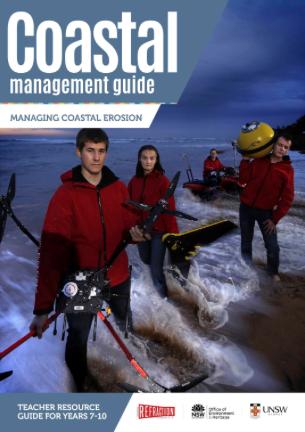
The Guide targets Australian High School STEM curriculum areas (Years 7–10) of Physical Sciences, Human Society & its Environment (HSIE), Geography, Earth & Environmental Sciences and Maths. More broadly, it is anticipated that the Guide’s educational themes and activities will provide a useful and stimulating resource in any classroom where ‘living at the coast’ can provide a launching point into diverse areas of secondary school STEM education.
The full Guide is freely available in two formats: pdf for download and eBook for online viewing.

If Victoria Can Ban CSG, NSW Can Too!
By The Wilderness SocietyCoal seam gas (CSG) threatens our water, our health and our climate. Many jurisdictions around the world are permanently banning this dangerous industry, most recently Victoria. We do not need or want risky coal seam gas in NSW. It’s clear that the industry has no social licence in our state, yet vast and critical areas—as well as human health—are still under threat from CSG across the state.
Call on the new Premier Berejiklian and the new Planning Minister Roberts to follow Victoria's lead and ban this harmful and risky industry in NSW.
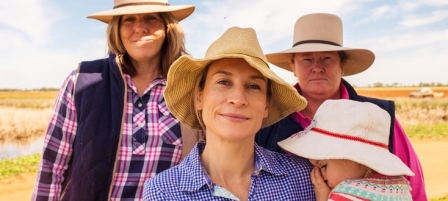

Petition: Rescind Adani's Unlimited Water License And Support Aussie Farmers!
As Queensland farmers, water is crucial for our livelihoods. As our climate gets hotter and drier, our water resources are even more precious. We call on the Queensland Premier to rescind the unlimited, free 60-year water license they are proposing to grant to the Adani coal mine.
Background: My name is Angus Emmott and I'm proud to be a third generation grazier from Longreach in outback Queensland. I'm committed to a sustainable future for farming in Australia and ask you for your support to protect our precious groundwater.
In Queensland, the proposed Adani-owned Carmichael coal mine has been granted unlimited access to groundwater. The mine, the biggest of nine proposed for the Galilee Basin west of Rockhampton, is expected to draw 26 million litres of water per day from its pits. Over its life this mine alone would total 355 billion litres of water and modelling already demonstrates that 2 springs will be shut down.
As farmers we are angry about the special deal struck by the Queensland government to give Adani free water for its proposed coal mine. I am launching this petition today to call upon Premier Annastacia Palaszczuk to support Aussie farmers and to rescind the water licenses that allow Adani access to unlimited water for 60 years.
All over the country, farmers are battling to stop fossil fuel mining and fracking on their land. Nearly 90% of Queensland is currently drought declared, so why are we giving an Indian billionaire access to unlimited groundwater for a new coal mine?
I'm asking all Australians, to stand with me in calling upon the Premier to rescind this approval before irrevocable damage is done to our groundwater systems and the long term sustainability of Queensland agriculture.
Angus Emmott with Farmers for Climate Action
Avalon Boomerang Bags 2017 Workshops
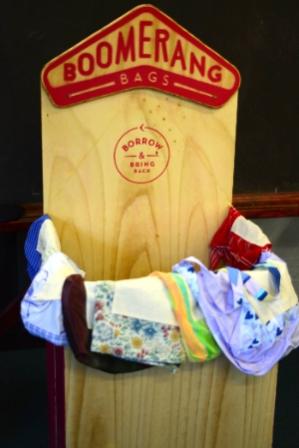 Boomerang Bag Working Bees run in Mona Vale onTuesdays 11:30am- 5pm.
Boomerang Bag Working Bees run in Mona Vale onTuesdays 11:30am- 5pm.
For those of you unable to come to workshops there are many other ways to get involved, just let us know you're willing by leaving a comment or sending us a message.
Pictured is a Boomerang Bag Box.
The boxes are located at:
Avalon OrganicsHertford ChemistAvalon WholefoodFresh Fruit and VegJohnson Bros Mitre TenAvalon MeatsAvalon Rec CentreWatch this space for another venue soon.
A huge thank you to everybody who has helped Boomerang Bags Avalon get this far. But the work is not over yet. Materials and more hands always welcome Facebook page Profile

What Does PNHA do?
On-ground bush regeneration. eg: Asparagus Fern Out Days
Activities: guided walks, bird-watching
Quaterly informative newsletter, online or paper
Members email group for leaset environmental news and events
AGM with Guest Speaker
Free advice for members on managing gardens for Native Vegetation and fauna habitat
Lobbies Pittwater Council and State Government on inappropriate management practices and development
Provides support to Council for PNHA-approved grant applications for environmental projects
Publications: Introductory Field Guide to Birds of Warriewood Wetlands & Irrawong Reserve, $20.00rrp, attractive cards with photos of Pittwater scenes, flora and fauna $2.00
Email: pnhainfo@gmail.com Or click on Logo to visit website.
Permaculture Northern BeachesFacebook page: www.facebook.com/permaculturenb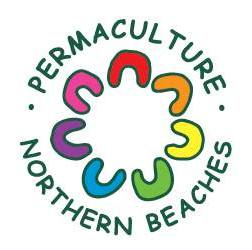 Want to know where your food is coming from?
Want to know where your food is coming from?
Do you like to enrich the earth as much as benefit from it?
Find out more here:
Pittwater's Environmental Foundation
Pittwater Environmental Foundation was established in 2006 to conserve and enhance the natural environment of the Pittwater local government area through the application of tax deductible donations, gifts and bequests. The Directors were appointed by Pittwater Council.
About 33% (about 1600 ha excluding National Parks) of the original pre-European bushland in Pittwater remains in a reasonably natural or undisturbed condition. Of this, only about 400ha remains in public ownership. All remaining natural bushland is subject to encroachment, illegal clearing, weed invasion, feral animals, altered drainage, bushfire hazard reduction requirements and other edge effects. Within Pittwater 38 species of plants or animals are listed as endangered or threatened under the Threatened Species Act. There are two endangered populations (Koala and Squirrel Glider) and eight endangered ecological communities or types of bushland. To visit their site please click on logo above.
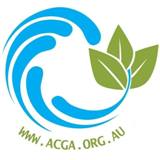 Avalon Community Garden
Avalon Community Garden
Community Gardens bring people together and enrich communities. They build a sense of place and shared connection.
Avalon Community Garden is a community led initiative to create accessible food gardens in public places throughout the Pittwater area. Our aim is to share skills and knowledge in creating fabulous local, organic food. But it's not just about great food. We also aim to foster community connection, stimulate creative ideas for community resilience and celebrate our abundance. Open to all ages and skills, our first garden is on the grounds of Barrenjoey High School (off Tasman Road ). Become part of this exciting initiative to change the world locally.
www.pcga.org.au Contact us info@pcg.org.au or Visit us atfacebook.com/acga.org; image artwork: www.gravey.com
Avalon Boomerang Bags 2017 Workshops
 Boomerang Bag Working Bees run in Mona Vale onTuesdays 11:30am- 5pm.
Boomerang Bag Working Bees run in Mona Vale onTuesdays 11:30am- 5pm.
For those of you unable to come to workshops there are many other ways to get involved, just let us know you're willing by leaving a comment or sending us a message.
Pictured is a Boomerang Bag Box.
The boxes are located at:
A huge thank you to everybody who has helped Boomerang Bags Avalon get this far. But the work is not over yet. Materials and more hands always welcome Facebook page Profile

What Does PNHA do?
On-ground bush regeneration. eg: Asparagus Fern Out Days
Activities: guided walks, bird-watching
Quaterly informative newsletter, online or paper
Members email group for leaset environmental news and events
AGM with Guest Speaker
Free advice for members on managing gardens for Native Vegetation and fauna habitat
Lobbies Pittwater Council and State Government on inappropriate management practices and development
Provides support to Council for PNHA-approved grant applications for environmental projects
Publications: Introductory Field Guide to Birds of Warriewood Wetlands & Irrawong Reserve, $20.00rrp, attractive cards with photos of Pittwater scenes, flora and fauna $2.00
Email: pnhainfo@gmail.com Or click on Logo to visit website.
 Want to know where your food is coming from?
Want to know where your food is coming from?
Do you like to enrich the earth as much as benefit from it?
Find out more here:
Pittwater's Environmental Foundation
Pittwater Environmental Foundation was established in 2006 to conserve and enhance the natural environment of the Pittwater local government area through the application of tax deductible donations, gifts and bequests. The Directors were appointed by Pittwater Council.
About 33% (about 1600 ha excluding National Parks) of the original pre-European bushland in Pittwater remains in a reasonably natural or undisturbed condition. Of this, only about 400ha remains in public ownership. All remaining natural bushland is subject to encroachment, illegal clearing, weed invasion, feral animals, altered drainage, bushfire hazard reduction requirements and other edge effects. Within Pittwater 38 species of plants or animals are listed as endangered or threatened under the Threatened Species Act. There are two endangered populations (Koala and Squirrel Glider) and eight endangered ecological communities or types of bushland. To visit their site please click on logo above.
 Avalon Community Garden
Avalon Community Garden
Community Gardens bring people together and enrich communities. They build a sense of place and shared connection.
Avalon Community Garden is a community led initiative to create accessible food gardens in public places throughout the Pittwater area. Our aim is to share skills and knowledge in creating fabulous local, organic food. But it's not just about great food. We also aim to foster community connection, stimulate creative ideas for community resilience and celebrate our abundance. Open to all ages and skills, our first garden is on the grounds of Barrenjoey High School (off
www.pcga.org.
New Research Centre Forging Energy Efficient Future For NSW
October 6th, 2017 NSW OE&H Media Release
NSW's first joint research hub driving innovative programs aimed at improving energy efficiency opportunities was launched in Sydney this week.The first two projects announced will aim to make social housing properties more energy efficient, helping reduce bills for tenants, and will provide new opportunities for zero-emission vehicles.
The Energy Efficiency Decision Making Node is a partnership between the Office of Environment and Heritage (OEH) and the Cooperative Research Centre for Low Carbon Living (CRC LCL).
Individual projects will be carried out by researchers from the University of NSW, the University of Wollongong and CSIRO.
OEH Executive Director of Science Dr Kate Wilson said the new research hub is lifting the bar to ensure NSW delivers the most energy efficient future possible.
"We're partnering with world-leading researchers who are working on all aspects of reducing energy use in the built environment," Dr Wilson said.
"From designing and developing new materials, implementing smart energy management techniques to understanding the drivers and motivations of the community.
"The new research hub will put NSW at the cutting edge, ensuring we're ahead of the game and planning well informed government programs that deliver the most sustainable and cost-effective outcomes for NSW," Dr Wilson said.
The Hon Robert Hill AC, Chair of the CRC LCL, said the team will answer fundamental questions to help guide future policies and programs.
"Planning ahead, we want to help businesses and consumers make the best decisions about their energy use," Mr Hill said.
"We need to understand the key factors in NSW that are influencing investment decisions.
"What drives suppliers to provide more efficient products, technologies and services, and what are the most practical actions we can take to save energy," Mr Hill said.
Scientia Professor Deo Prasad AO, CEO of the CRC LCL which will host the hub at the University of NSW, said the Centre is ideally placed to work with OEH.
"Our organisations share many of the same goals, including the development of sustainable, world-class buildings and building products with decreasing energy demands," said Professor Prasad.
"We look forward to working with OEH to demonstrate the importance of the practical application of scientific research, to help us tackle environmental, social, and economic challenges," Professor Prasad said.
Harbour Trust Invites Community Feedback On Interpretation Strategy For Headland Park
Wednesday, 20 September 2017: Harbour Trust
The Harbour Trust is inviting the community and stakeholders to help share the rich history of Headland Park by providing feedback on its draft Interpretation Strategy for Headland Park. The Strategy aims to draw out various aspects of the site’s rich history and guide the addition of interpretative elements across the precinct that share this history.
Headland Park is one of Sydney’s most striking urban parklands with incorporating the former military sites at Chowder Bay, Georges Heights and Middle Head and connecting with Sydney Harbour National Park and Mosman Council reserves. It also has a rich Indigenous history. The urban parkland was first opened to the public in 2003 and has since become a thriving business park with a mix of commercial tenants, boutique cafes and art studios, and incorporates spectacular views of the harbour, bush tracks and recreation facilities.
“The Harbour Trust is developing an Interpretation Strategy to build on the existing heritage interpretation and further share the stories of the site’s Indigenous, military and submariner history as well as its modern history as an urban parkland,” said Harbour Trust CEO, Mary Darwell.
“It is expected the Strategy will result in the addition of interpretative items across the precinct using modern interpretive methods, resulting in a more engaging visitor experience and allowing the important historical threads of the site to be shared and remembered.
“In order to develop the draft Strategy, the Harbour Trust undertook workshops and online surveying with key stakeholders representing the site’s Indigenous and military history as well as community groups who are actively involved in the site.
“The contributions of these stakeholders has been vital in the development of the draft Plan, and I now encourage all members of the community to take this opportunity to join in the conversation and provide feedback on how this site’s intriguing history can be shared with everyone,” said Ms Darwell.
“We look forward to working closely with National Parks and Wildlife Services and Mosman Council in the delivery of the strategy,” she said.
The Interpretation Strategy will build on the existing military heritage interpretation of the site that includes the Hospital on the Hill interpretation trail and the History of Headland Park Interpretation Centre which tells the story of the Submarine Miners at Chowder Bay. Regular guided tours also take place every month taking visitors through the site’s underground tunnel and gun emplacements.
The plan will be on exhibition until 9 October, and available onwww.harbourtrust.com.au . Printed copies are available to view at the Harbour Trust Office, Building 28 Best Ave, Mosman; Mosman Council, Civic Centre, Mosman Square; and Mosman Library, 605 Military Rd, Mosman.
Kooragang Liquefied Petroleum Gas Storage Facility
The applicant proposes to construct a LPG storage and cylinder filling and small truck loading facility on Egret Street, Kooragang.
The Facility will consist of the following: - One 50-tonne LPG tank, fireproofed with fendolite coating. - LPG loading/ unloading point (B-Double road tanker delivery and bobtail tanker loading). - LPG pump supplying cylinder filling plant. - One 4.5 kL LPG tank for receiving residual LPG from returned cylinders before inspection and refill. - Cylinder filling and storage, loadout on flat top trucks. - Overnight parking of laden bobtail tankers in a dedicated area.
Exhibition Start 14/09/2017Exhibition End 16/10/2017
Second Life For Electric Car Batteries
4 October 2017: Media release - The Hon. Josh Frydenberg MP, Minister for the Environment and Energy
The Turnbull Government, through the Clean Energy Innovation Fund, is investing up to $750,000 in a Melbourne start-up which takes used batteries from electric vehicles and repurposes them for household energy storage.
The start-up, Relectrify, has developed new technology using advanced battery monitoring and control algorithms to boost the lifespan and storage capabilities of electric vehicle batteries, making them an affordable and sustainable energy storage option for households with solar panels.
“Batteries can retain up to 80 per cent of their storage capacity even after they can no longer provide sufficient acceleration power and driving range for vehicles,” said the Minister for the Environment and Energy Josh Frydenberg.
“This investment will help Relectrify commercialise its technology to boost the performance and increase the longevity of second life batteries, leading to lower battery costs in the future.
“Through the Clean Energy Innovation Fund, we are providing investments and loans for innovation in renewables and for early stage and emerging clean energy technologies.”
The Clean Energy Innovation Fund is operated by the Clean Energy Finance Corporation in conjunction with the Australian Renewable Energy Agency.
The Turnbull Government's investment in innovative clean energy technologies will help to deliver reliable and affordable energy as we transition to a lower emissions future.
$3 Million In Grants Now Available For Commuity Recycling Centres
Media release: EPAThe NSW Environment Protection Authority (EPA) and the NSW Environmental Trust (ET) are calling for local government, not-for-profit organisations and businesses from select Local Government areas to apply for grants to set up Community Recycling Centres (CRC) for the collection of household problem wastes.
The $3 million Community Recycling Centre grants program is now open as part of the Waste Less, Recycle More initiative. Community Recycling Centres make it easier for NSW residents to recycle or safely dispose items like oils, paints and batteries.
Applications are open until Wednesday 15 November 2017 with funding of up to $200,000 available to enhance existing facilities or build new facilities for the collection of problem waste. This is the fourth round of funding and it is designed to help keep problem waste out of the kerbside bin system by providing convenient and easy to use facilities for the community.
EPA Chair and CEO Barry Buffier said the aim of the program is to establish a network that will provide 90 per cent of NSW households with access to a free Community Recycling Centre for common household problem wastes.
“This funding focuses on our priority to establish Community Recycling Centres based on existing gaps in the network.
‘The funding to establish facilities in 22 priority Local Government Areas will mean residents will have a permanent facility available to people to drop-off low toxic wastes, such as gas bottles, household batteries, paint, oils and smoke detectors, Mr Buffier said.
‘To date, over 100 Community Recycling Centres have been funded in NSW and 62 are currently operational. Almost two million kilograms of household problem waste has been collected since the program started." Priority LGAs for funding include: Blacktown, Canterbury Bankstown, The Hills, Ku-ring-gai, Northern Beaches, Sydney, Bayside, Camden, Goulburn Mulwaree, North Sydney, Parramatta, Ryde, Shellharbour, Wagga Wagga, Waverley, Wollondilly, Woollahra, Yass Valley, Central Coast, Cumberland, Lake Macquarie and Sutherland. On behalf of the ET, Peter Dixon, Director Grants in the Office of Environment & Heritage states:
“This is one of our most successful community level grants programs. The take-up by local councils has been tremendous and the neighbourhoods with a new or upgraded Community Recycling Centre are enjoying the benefits of a free and convenient way of dropping off their problem wastes for environmentally friendly disposal and recycling”
Applications close 5pm, Wednesday 15 November 2017
For more information about the grants including how to apply and information sessions please visit:
For more information about Waste Less, Recycle More go to the EPA website:
Asparagus Fern
Asparagus Fern is our worst weed in Pittwater. The Bush Invaders is by PNHA member and primary school teacher Sylvia Saszczak. Share to spread the message about this horror weed.


Navigation Warning - NSW Coastal Waters: Whale Migration Season
NSW COASTAL WATERS2017 WHALE MIGRATION SEASONJune to December 2017
DESCRIPTIONMigrating whales and whale calves are expected to be present in numbers off the NSW coast during this time.
From June to August whales will be in greater abundance generally moving north within about five nautical miles (nine kilometres) of the coast.
From August to December whales will be in greater abundance generally moving south within about 10-15 nautical miles (18-28 kilometres) of the coast.
From July to December Southern Right Whales with calves are likely to be present within 10 nautical miles of the NSW coast and within coastal estuaries.
DIRECTIONWithin this period it is expected that whale sightings may be common and mariners are advised to navigate with due care and appropriate caution around any whale activity, including reducing to an appropriate speed to maintain safe navigation.
The approach distance for whales in NSW and Commonwealth waters is 100 metres for whales without calves. If calves are present the approach distance is 300 metres.
In the event of a collision with a whale, entanglement or whale carcass sighting please call:
National Parks and Wildlife Service Incident Duty Officer on: 02 9895 6444
MAP & CHARTS AFFECTEDCharts: AUS 806 to AUS 813 Inclusive.
RMS Coastal Boating Maps: 1-14 Inclusive.
Contact Details:
For further details please contact the National Parks and Wildlife Service, Wildlife Team on 9585 6523 or (RMS Contact details 13 12 36)
Information regarding the current location of whales may be obtained at:http://www.wildaboutwhales.com.au/
Further information about whale approach distances or whale behaviour may be obtained from the Office of Environment and Heritage website at:http://www.environment.nsw.gov.au/
MARINE NOTICE SY1724
Energy Locals For 100% Carbon Neutral Plans
From Surf Life Saving NSW Interested in 100% carbon neutral plans, huge solar feed in tariffs and Australian owned and operated in your energy provider? Look no further than SLSNSW's newest partner Energy Locals to see how they will revolutionise your energy plan: energylocals.com.au/providers/slsnsw
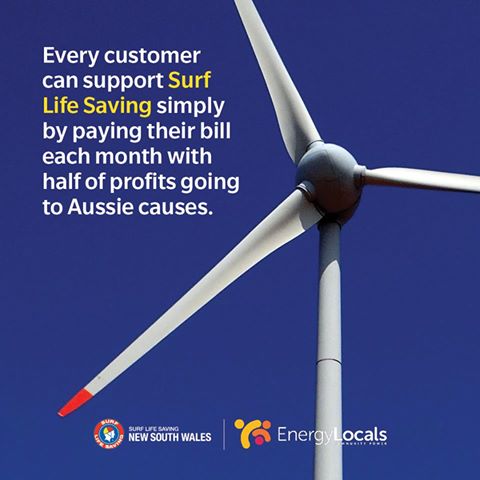

Myna Action Group
Pittwater Natural Heritage Association (PNHA)
Indian Mynas - what a pest - like flying rats. Contact us on pnhainfo@gmail.com for more information and have a look athttps://www.facebook.com/MynaProblems/
Indian Mynas are displacing our native birds. They often nest in and around shops where their food source is. I took this one down this morning in Avalon (no chicks or eggs but I disturbed the female). There were literally hundreds of tiny bits of plastic in the nest which makes you think that all this plastic would be swilling down the stormwater drains into the sea.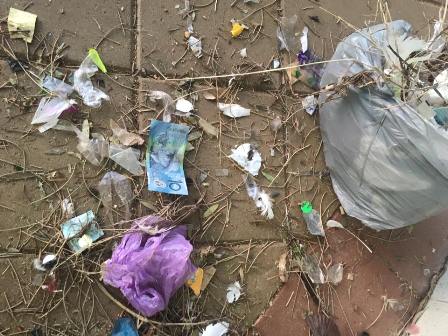

Living Ocean
Website: www.livingocean.org.au
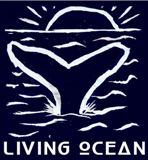 Living Ocean was born in Whale Beach, on the Northern Beaches of Sydney, surrounded by water and set in an area of incredible beauty.Living Ocean is a charity that promotes the awareness of human impact on the ocean, through research, education, creative activity in the community, and support of others who sustain ocean health and integrity.
Living Ocean was born in Whale Beach, on the Northern Beaches of Sydney, surrounded by water and set in an area of incredible beauty.Living Ocean is a charity that promotes the awareness of human impact on the ocean, through research, education, creative activity in the community, and support of others who sustain ocean health and integrity.
And always celebrating and honouring the natural environment and the lifestyle that the ocean offers us.
Our whale research program builds on research that has been conducted off our coastline by our experts over many years and our Centre for Marine Studies enables students and others to become directly involved.
Through partnerships with individuals and organizations, we conceive, create and coordinate campaigns that educate all layers of our community – from our ‘No Plastic Please’ campaign, which is delivered in partnership with local schools, to film nights and lectures, aimed at the wider community.
Additionally, we raise funds for ocean-oriented conservation groups such as Sea Shepherd.
Donations are tax-deductable Australian Native Foods website: http://www.anfil.org.au/
Wildlife Carers and Organisations in Pittwater:
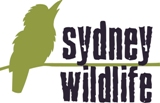 Sydney Wildlife rescues, rehabilitates and releases sick, injured and orphaned native wildlife. From penguins, to possums and parrots, native wildlife of all descriptions passes through the caring hands of Sydney Wildlife rescuers and carers on a daily basis. We provide a genuine 24 hour, 7 day per week emergency advice, rescue and care service.
Sydney Wildlife rescues, rehabilitates and releases sick, injured and orphaned native wildlife. From penguins, to possums and parrots, native wildlife of all descriptions passes through the caring hands of Sydney Wildlife rescuers and carers on a daily basis. We provide a genuine 24 hour, 7 day per week emergency advice, rescue and care service.
As well as caring for sick, injured and orphaned native wildlife, Sydney Wildlife is also involved in educating the community about native wildlife and its habitat. We provide educational talks to a wide range of groups and audiences including kindergartens, scouts, guides, a wide range of special interest groups and retirement villages. Talks are tailored to meet the needs and requirements of each group.
Found an injured native animal? We're here to help.
Keep the animal contained, warm, quiet and undisturbed. Do not offer any food or water. Call Sydney Wildlife immediately on 9413 4300, or take the animal to your nearest vet. Generally there is no charge. Find out more at: www.sydneywildlife.org.au
 Southern Cross Wildlife Care was launched over 6 years ago. It is the brainchild of Dr Howard Ralph, the founder and chief veterinarian. SCWC was established solely for the purpose of treating injured, sick and orphaned wildlife. No wild creature in need that passes through our doors is ever rejected.
Southern Cross Wildlife Care was launched over 6 years ago. It is the brainchild of Dr Howard Ralph, the founder and chief veterinarian. SCWC was established solely for the purpose of treating injured, sick and orphaned wildlife. No wild creature in need that passes through our doors is ever rejected.
People can assist SCWC by volunteering their skills ie: veterinary; medical; experienced wildlife carers; fundraising; "IT" skills; media; admin; website etc. We are always having to address the issue of finances as we are a non commercial veterinary service for wildlife in need, who obviously don't have cheque books in their pouches. It is a constant concern and struggle of ours when we are pre-occupied with the care and treatment of the escalating amount of wildlife that we have to deal with. Just becoming a member of SCWC for $45 a year would be a great help. Regular monthly donations however small, would be a wonderful gift and we could plan ahead knowing that we had x amount of funds that we could count on. Our small team of volunteers are all unpaid even our amazing vet Howard, so all funds raised go directly towards our precious wildlife. SCWC is TAX DEDUCTIBLE.
Find out more at: southerncrosswildlifecare.org.au/wp/
 Living Ocean was born in Whale Beach, on the Northern Beaches of Sydney, surrounded by water and set in an area of incredible beauty.
Living Ocean was born in Whale Beach, on the Northern Beaches of Sydney, surrounded by water and set in an area of incredible beauty.Australian Native Foods website: http://www.anfil.org.au/
Wildlife Carers and Organisations in Pittwater:
 Sydney Wildlife rescues, rehabilitates and releases sick, injured and orphaned native wildlife. From penguins, to possums and parrots, native wildlife of all descriptions passes through the caring hands of Sydney Wildlife rescuers and carers on a daily basis. We provide a genuine 24 hour, 7 day per week emergency advice, rescue and care service.
Sydney Wildlife rescues, rehabilitates and releases sick, injured and orphaned native wildlife. From penguins, to possums and parrots, native wildlife of all descriptions passes through the caring hands of Sydney Wildlife rescuers and carers on a daily basis. We provide a genuine 24 hour, 7 day per week emergency advice, rescue and care service.
As well as caring for sick, injured and orphaned native wildlife, Sydney Wildlife is also involved in educating the community about native wildlife and its habitat. We provide educational talks to a wide range of groups and audiences including kindergartens, scouts, guides, a wide range of special interest groups and retirement villages. Talks are tailored to meet the needs and requirements of each group.
Found an injured native animal? We're here to help.
Keep the animal contained, warm, quiet and undisturbed. Do not offer any food or water. Call Sydney Wildlife immediately on 9413 4300, or take the animal to your nearest vet. Generally there is no charge. Find out more at: www.sydneywildlife.org.au
 Southern Cross Wildlife Care was launched over 6 years ago. It is the brainchild of Dr Howard Ralph, the founder and chief veterinarian. SCWC was established solely for the purpose of treating injured, sick and orphaned wildlife. No wild creature in need that passes through our doors is ever rejected.
Southern Cross Wildlife Care was launched over 6 years ago. It is the brainchild of Dr Howard Ralph, the founder and chief veterinarian. SCWC was established solely for the purpose of treating injured, sick and orphaned wildlife. No wild creature in need that passes through our doors is ever rejected.
People can assist SCWC by volunteering their skills ie: veterinary; medical; experienced wildlife carers; fundraising; "IT" skills; media; admin; website etc. We are always having to address the issue of finances as we are a non commercial veterinary service for wildlife in need, who obviously don't have cheque books in their pouches. It is a constant concern and struggle of ours when we are pre-occupied with the care and treatment of the escalating amount of wildlife that we have to deal with. Just becoming a member of SCWC for $45 a year would be a great help. Regular monthly donations however small, would be a wonderful gift and we could plan ahead knowing that we had x amount of funds that we could count on. Our small team of volunteers are all unpaid even our amazing vet Howard, so all funds raised go directly towards our precious wildlife. SCWC is TAX DEDUCTIBLE.
Find out more at: southerncrosswildlifecare.org.au/wp/
13 Drinks A Session: Risky Teen Drinkers Drinking More Than Ever
Council Amalgamations Don’t Add Up
Synthetic Lotteries Face Restrictions
Australian Ready Meals Are Saltier Than Ever: Study
Risky Behaviour And Adverse Events Are Increasing Among Ecstasy Users
One Hour Of Exercise A Week Can Prevent Depression
ANU Welcomes This Year’s Nobel Prize In Physics
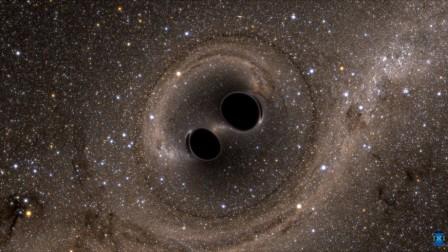
Australia Commits To Sustainable Fisheries For All
- More than 3.4 million Australians are regular fishers and on average Australians eat 140 serves of seafood every year.
- Australia’s fisheries are owned by all Australians and shared between numerous stakeholders.
- Commonwealth fisheries share fish stocks with the states and the Northern Territory—catches are managed cooperatively to assure sustainability.
- The 2016 Fisheries status report showed that for the third consecutive year no fish stocks were classified as subject to overfishing in any fisheries managed solely by the Australian Government.
74 Year-Old Mystery Solved: RV Investigator Finds WWII Shipwreck
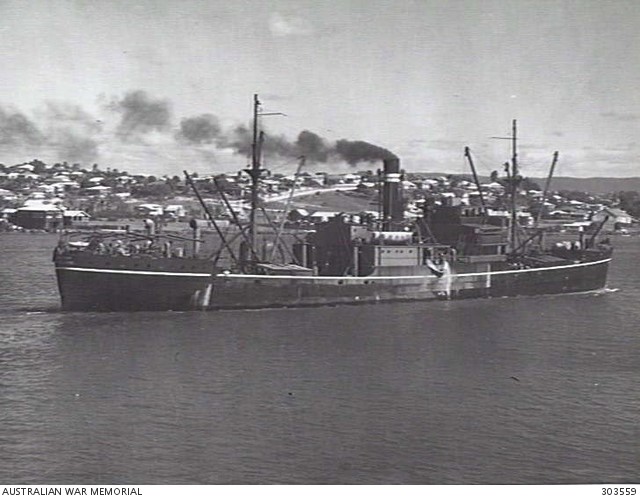
First Faculty Showcase Highlights Built Environment’s Finest Work
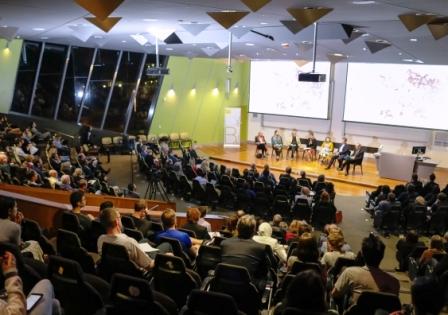
World-Leading Dementia Scientist To Join UNSW And NeuRA
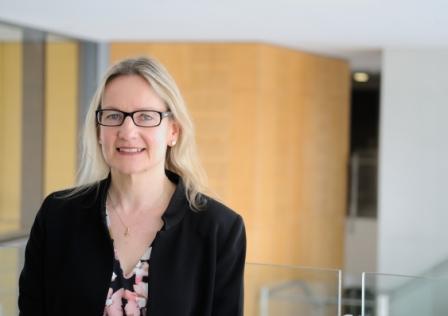
$148 Million Radar Upgrade For Anzac Class Frigates
Disclaimer: These articles are not intended to provide medical advice, diagnosis or treatment. Views expressed here do not necessarily reflect those of Pittwater Online News or its staff.
